

Zitierweise / cite as:
Payer, Alois <1944 - >: Chronik Thailands = กาลานุกรมสยามประเทศไทย. -- Chronik 2006 / B. E. 2549. -- 3. Juli bis Dezember. -- Fassung vom 2017-03-21. -- URL: http://www.payer.de/thailandchronik/chronik2006c.htm
Erstmals publiziert: 2012-11-09
Überarbeitungen: 2017-03-21 [Ergänzungen] ; 2017-01-02 [Ergänzungen] ; 2016-11-10 [Ergänzungen] ; 2016-03-17 [Ergänzungen] ; 2016-01-17 [Ergänzungen] ; 2015-04-18 [Ergänzungen] ; 2015-01-19 [Ergänzungen] ; 2014-10-31 [Ergänzungen] ; 2014-09-23 [Ergänzungen] ; 2014-09-05 [Ergänzungen] ; 2014-08-22 [Ergänzungen] ; 2014-04-10 [Ergänzungen] ; 2014-02-11 [Ergänzungen] ; 2013-04-25 [Ergänzungen] ; 2013-04-25 [Teilung des Jahrgangs]; 2013-04-21 [Ergänzungen]; 2013-04-10 [Ergänzungen]; 2013-03-30 [Ergänzungen]; 2013-03-24 [Ergänzungen]; 2013-03-09 [Ergänzungen]; 2013-03-07 [Ergänzungen]; 2013-03-02 [Ergänzungen]; 2013-02-13 [Ergänzungen]; 2013-02-13 [Ergänzungen]; 2013-01-13 [Ergänzungen]; 2012-11-13 [Ergänzungen]
©opyright: Dieser Text steht der Allgemeinheit zur Verfügung. Eine Verwertung in Publikationen, die über übliche Zitate hinausgeht, bedarf der ausdrücklichen Genehmigung des Herausgebers.
Dieser Text ist Teil der Abteilung
Thailand von
Tüpfli's Global Village Library
ช้างตายทั้งตัวเอาใบบัวปิดไม่มิด
|
Gewidmet meiner lieben Frau Margarete Payer die seit unserem ersten Besuch in Thailand 1974 mit mir die Liebe zu den und die Sorge um die Bewohner Thailands teilt. |
|
Bei thailändischen Statistiken muss man mit allen Fehlerquellen rechnen, die in folgendem Werk beschrieben sind:
Die Statistikdiagramme geben also meistens eher qualitative als korrekte quantitative Beziehungen wieder.
|
2006-07

Erstmals trifft auf dem Mekong (แม่น้ำโขง) ein 300-Bruttoregistertonnen-Schiff aus Yunnan (云南) in Chiang Saen (เชียงแสน) ein. Es kann bei Niedrigwasser fünf Container transportieren, bei Hochwasser zwölf Container.
Abb.: Lage von Chiang Saen (เชียงแสน)
[Bildquelle: Hdamm / Wikipedia. -- GNU FDLicense]
2006-07 - 2006-08
Die Provinzen Pattani (ปัตตานี) und Satun (สตูล) sowie weitere fünf südliche Provinzen leiden unter Smog aufgrund von Waldbränden in Indonesien.
Abb.: Lage der Provinzen Pattani (ปัตตานี) und Satun (สตูล)
[Bildquelle: CIA. -- Public domain]
2006-07-03

Bericht von US-Botschafter Ralph L. Boyce (1952 - ) an das State Departement in Washington DC:
|
"SUBJECT: WHAT'S THAKSIN UP TO?
[...]
[...] ATTACK ON PRIVY COUNCILLOR PREM
2. (C) After a brief break to celebrate the King's 60th anniversary on the throne, PM Thaksin [ทักษิณ ชินวัตร, 1949 - ] has come out swinging, more aggressively than ever. While his own political fortunes are still very unclear, he appears bent on fighting every step of the way, and taking everyone down with him if he goes. He may have miscalculated, however, in making a not-so-veiled attack on the very popular Privy Council President General Prem Tinsulanonda [เปรม ติณสูลานนท์, 1920 - ]. Thaksin, speaking before a assembly of civil servants and military officers on June 29, railed against a "person who has charisma" who is "outside the Constitution," saying, "Some people think that they are more important than others" and "want to be Prime Minister under Article 7 despite his Majesty's comments that it is undemocratic." He claimed that this unnamed person was behind the resignations of two top legal advisors in his administration (Cabinet secretary Bowornsak [Borwornsak Uwanno - บวรศักดิ์ อุวรรณโณ, 1954 - ] and DPM Wisanu [Wissanu Krea
PALACE INSIDER'S VIEW 4. (C) The Ambassador met on June 30 with Piya Malakul Na Ayutthaya [ปีย์ มาลากุล ณ อยุธยา, 1937 - ] (protect), a close associate of the Queen and a very knowledgeable palace insider. Piya said that those attending the PM's speech had been shocked by his attack on Gen. Prem; Piya has received many calls since the speech expressing dismay and asking what should be done about the PM's remarks. He felt that the PM was trying to attack the King himself through Prem. He described the many ways in which Thaksin and his associates had been working to undermine the King and the royal institution. There was an overseas website [Manusaya.com (มนุษย์ดอตคอม)] which for months had carried scurrilous and crude attacks on the monarchy. Piya presented a convincing case that he had traced the source of the money being paid to the webmaster of this site (usdols 4000/month) to the wife [Apinnya Vechayachai - อภิญญา เวชยชัย] of the TRT [Thai Rak Thai Party - พรรคไทยรักไทย], deputy secretary general Phumtham Vechayachai [ภูมิธรรม เวชยชัย, 1953 - ]. He described the website as part of a program by Thaksin and his supporters to diminish the role of the monarchy. The Ambassador noted that Thaksin felt he was a rival of the King for the affections of the rural population. Piya agreed, and pointed out how TRT officials had sycophantically received Thaksin on his trips to the North and Northeast, swelling his ego.
6. (C) Piya recounted how Thaksin's star was falling. The Army First Cavalry Division [กองพลทหารม้าที่ 1] commander is an ally of Thaksin's, from the same prep class in the police/military academy (Class 10). Piya told us that the First Cavalry deputy commander had recently reassured him that the First Cavalry would not support any kind of pro-Thaksin coup attempt; no matter what their chief ordered, "We won't listen to him." Piya welcomed the assurance that the unit would not take part in a coup, even while bemoaning the weakened state of the military, in which subordinates would flout their superiors' orders. He also indicated that, if the situation did not resolve itself soon, the Army might step in, in some unspecified manner. IT'S THE VALIUM TALKING
7. (C) Everyone is speculating on why Thaksin launched this attack. Piya claims that Thaksin is taking large doses of Valium [Diazepam] (28 mg) to cope with the pressure he's under. The Democrat party spokesman suggested that Prem may be operating behind the scenes, encouraging the Constitutional Court justices [ศาลรัฐธรรมนูญ] to find against Thaksin; these efforts may have come to Thaksin's attention, infuriating him so that he blew a gasket. (Thaksin told the Ambassador over lunch on June 1 that Prem and other privy councillors were out to destroy him - reftel.) Others point to Thaksin's penchant for spouting off combined with his ingrained arrogance, Whatever the reason, this was a reckless act, provocative to society at large and particularly to the Army. (Just a few months ago, for example, former Bangkok governor and political blowhard Samak [สมัคร สุนทรเวช, 1935 - 2009] was taken off the air when he criticized General Prem on his morning TV show on the Army channel.) 8. (C) The Privy Council [คณะองคมนตรีไทย] isn't Thaksin's only target. Immediately after the King's celebration, Thaksin sued the Democrats [พรรคประชาธิปัตย์] (for calling him a blood-sucking demon) and three newspapers for publishing those accusations. On June 30, he sued the Democrats again, for one billion baht (about usdols 26 million), for defaming him in a speech earlier this year. (The Democrats reportedly accused him of culpability the incidents at Krue Se [Masjid Kerisek - มัสยิดกรือเซะ] and Tak Bai [ตากใบ], of evading taxes on the sale his Shin Corp in January, and of destroying the parliamentary system.) 9. (C) During a meeting with the Ambassador on July 3, Democrat Party leader Abhisit [อภิสิทธิ์ เวชชาชีวะ, 1964 - ] said that the Democrats would welcome the chance to defend themselves in court on the PM's charges. Abhisit said that, unlike Singapore, the goal of these cases against the opposition is not really to win a large settlement, but just to keep them busy and off-balance, constantly on the defensive. In such cases, the plaintiff's lawyers will often ask for many continuances, so that they never have to make their case. Abhisit said he will challenge Thaksin to actually appear in court so the Democrats can make their case." [Quelle: http://wikileaks.org/cable/2006/07/06BANGKOK3916.html. -- Zugriff am 2013-02-19] |
Nach 2006-07-05

Die Bestattungszeremonien für Polizei-General Phantarak Ratchadet (พลตำรวจตรี ขุนพันธรักษ์ราชเดช aka. Khun Phan - ขุนพันธ์ฯ, 1903 - 2006), an denen Kronprinz Vajiralongkorn (สมเด็จพระบรมโอรสาธิราช เจ้าฟ้ามหาวชิราลงกรณ สยามมกุฎราชกุมา, 1952 - ) teilnimmt, tragen wesentlich dazu bei, dass Jatukham Rammathep (จตุคามรามเทพ) Amulette 2006-2007 die meistgesuchten Amulette werden. Eine 40-Milliarden-Industrie lebt davon. Über 80 Millionen Amulette werden produziert. Geschichten über den General werden verbreitet, um die ungeheure magische Macht dieser Amulette in ganz Thailand zu zeigen.
Die Zeitschrift Matichon (มติชน) spricht von "Jatuka-nomics" und "Deva-Marketing".
Ursprünglich waren 1987 die Amulette verkauft worden, um in Nakhon Si Thammarat (นครศรีธรรมราช) einen Schrein für den Stadtpfeiler (หลักเมือง) zu bauen. Ein solcher Schrein wurde von den Polizei-Oberen als nötig erachtet, da Nakhon Si Thammrat zu den fünf Städten mit der höchsten Kriminalitätsrate war.
Abb.: Lage von Nakhon Si Thammarat [นครศรีธรรมราช]
[Bildquelle: OpenStreetMap. -- Creative Commons Lizenz (Namensnennung, share alike)]
Abb.: Stadtpfeiler (หลักเมือง) von Nakhon Si Thammarat (นครศรีธรรมราช), 2008
[Bildquelle: Media lib / Wikimedia. -- GNU FDLicense]
Abb.: Polizei-General Phantarak Ratchadet (พลตำรวจตรี ขุนพันธรักษ์ราชเดช )
[Bildquelle: th.Wikipedia]
Abb.: Jatukham Rammathep (จตุคามรามเทพ) Amulett, 2007
(Durchmesser der Amulette 5 cm)
[Bildquelle: Isriya Paireepairit. -- http://www.flickr.com/photos/isriya/478021976/in/photolist-JeZhd-34MoNK-7ZPa4s. -- Zugriff am 2014-08-16. -- Creative Commons Lizenz (Namensnennung, keine kommerzielle Nutzung)]
The original Jatukham Rammathep amulets were created in 1987 by a Thai policeman named Khun Phantharak Rajjadej [ขุนพันธรักษ์ราชเดช, 1903 -2006] who believed that the spirit of Jatukham Rammathep had assisted him in solving a difficult murder case.
During 2006, following on the death of Khun Phantharak Rajjadej [2006-07-05], Jatukham Rammathep amulets began to grow wildly in popularity among Thais who believed in their ability to grant good fortune and solve personal problems. The amulets were initially distributed by a temple in the town of Nakhon Si Thammarat in southern Thailand. As the demand for these amulets grew, they began to also be produced at other temples in Thailand.[2]
In April 2007, a woman died after being trampled in a rush to acquire reservations for a batch of Jatukham Rammathep amulets being produced at the Mahathat Woromaha Vihan [วัดพระมหาธาตุวรมหาวิหาร] temple in Nakhon Si Thammarat.[2] Later that month, in the face of a crime wave of daily amulet robberies, Thailand's Supreme Patriarch (พระสังฆราช) stopped providing materials from the temple, such as ash from incense, used to make the amulets.[3]
Trucks with loudspeakers blare promotions for different series of amulets all day in Nakhon Si Thammarat, and colorful posters cover many walls.[4]
It is estimated that sales of the Jatukham Rammathep amulet in Thailand will amount to over 20 billion baht during 2007."
[Quelle: http://en.wikipedia.org/wiki/Jatukham_Rammathep. -- Zugriff am 2014-08-16]
"According to Phawini Inthep, the production of the Chatukham-Rammathep amulet had four key features:
- high-quality pressing of the amulet (phim di [พิมพ์ดี]);
- outstanding raw materials (muansan den);
- straightforward and appealing statement of how the proceeds would be used (chut prasong chatchen); and
- a complete series of consecrating rituals (phithi krop), led by renowned figures, mostly magic monks.
These four components transformed simple sets of materials into objects of worship endowed with magical power. These features were also already part of the Thai amulet tradition, but no earlier amulet-making ventures have ever reached the economic, political, and religious scale of Chatukham-Rammathep.
Three principal factors contributed to the spectacular success of Chatukham-Rammathep.
- First, this amulet is firmly associated with a very special place in the Thai Buddhist universe, Wat Mahathat Maha Worawihan [วัดพระมหาธาตุวรมหาวิหาร], Nakhon Si Thammarat, an ancient chedi [เจดีย์] with a long history and well-known legends.
- Second, Khun Phan’s [ขุนพันธ์ฯ] local reputation helped to promote the amulet, and indeed Khun Phan was as popular as Chatukham-Rammathep itself. Series of his images were reproduced and sold along with the amulets. His well-attended and widely publicized funeral in early 2007 demonstrated how well Chatukham-Rammathep had registered in the minds of the public.
- Third, Chatukham-Rammathep is perhaps the most intensively marketed and promoted amulet in the history of Thai amulets—its marketing involved massive and outrageous advertisement campaigns and strategies, such as making the amulet on a commercial flight while the plane flew over the sacred stupa [เจดีย์] in Nakhon Si Thammarat, or mixing human flesh and ashes into the raw materials. According to Neilsen Media Research (Thailand), more than 70 million baht (around 2 million USD) was invested in Chatukham-Rammathep advertisements in major newspapers, such as Khao sot [ข่าวสด], Kom chat luek [คมชัดลึก], Thai rath [ไทยรัฐ], Daily News [เดลินิวส์], and Matichon [มติชน], in the period from January to March 2007 alone."
[Quelle: Pattana Kitiarsa [พัฒนา กิติอาษา] <1968-2013>: Mediums, monks, and amulets : Thai popular Buddhism today. -- Chiang Mai : Silkworm, [2012]. -- 170 S. : Ill ; 21 cm. -- ISBN 9786162150494. -- S, 117f.]
2006-07-06
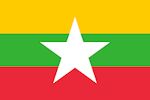
Eine Studie in Amphoe Phop Phra (พบพระ) zeigt, dass dort Karen (กะเหรี่ยง) Flüchtlings-Kinder aus Myanmar mit gefährlichen Pestiziden und Düngern arbeiten müssen. Arbeitsminister Somsak Thepsutin (สมศักดิ์ เทพสุทิน, 1955 - ) sagt dazu, dass es noch 10 Jahre dauern wird bis in Thailand die schlimmsten Formen der Kinderarbeit ausgerottet sind.
Abb.: Lage von Phop Phra (พบพระ)
[Bildquelle: OpenStreetMap. -- Creative Commons Lizenz (Namensnennung, share alike)]
Abb.: Somsak Thepsutin (สมศักดิ์ เทพสุทิน), 2007
[Bildquelle: th.Wikipedia]
2006-07-13
Premiere des Films Colic: The Movie (เด็กเห็นผี) von Patchanon Thammajira (พัชนนท์ ธรรมจิรา)
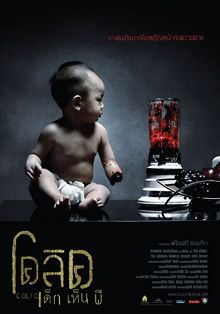
Abb.: Plakat
[Bildquelle: Wikipedia. -- Fair use]
|
"Colic: The Movie (Thai: เด็กเห็นผี, or Colic: dek hen pee) is a 2006 Thai horror film directed by Patchanon Thammajira (พัชนนท์ ธรรมจิรา). PlotPrae (แพร) and Pong (ป้อง) are young couple enjoying their lives and careers. Prae works as a graphic artist, while her boyfriend, Pong, directs television commercials. One day, Prae collapses at work, and it turns out she is pregnant. At first Prae is worried that Pong will not accept the baby, but he surprises her with a marriage proposal. The couple settles into a home. The adjustment is difficult, as Prae must quit her job and soon becomes bored, while Pong works overtime to make up for the lost income. Then the baby, Pan, is born. He cries constantly, adding to the tension felt by the new parents. A doctor says the baby simply has colic, and that after about six months, things will settle down. But the crying continues. Prae, because she spends most of her time with baby, notices strange things happening and becomes convinced that sinister forces from victims of Pan when he was an general in his last life are making the baby unhappy. In the end Pan is safe. Cast
[Quelle: http://en.wikipedia.org/wiki/Colic:_The_Movie. -- Zugriff am 2013-03-23] |
2006-07-13
Premiere des Films Metrosexual (แก๊งชะนีกับอีแอบ) von Yongyoot Thongkongtoon (ยงยุทธ ทองกองทุน, 1967 - )
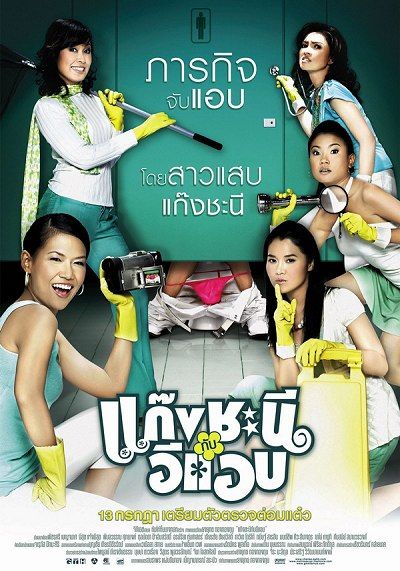
Abb.: Plakat
[Bildquelle: Wikipedia. -- Fair use]
|
"Metrosexual (Thai: แก๊งชะนีกับอีแอบ or Gaeng chanee gup ee-aep) is a 2006 Thai romantic comedy film about four women who believe their best friend is about to marry a man who is gay. The film was directed by Yongyooth Thongkongtoon (ยงยุทธ ทองกองทุน, 1967 - ), who also directed The Iron Ladies (สตรีเหล็ก, 2000). The five female leads all co-host a daytime talk show on Thai TV Channel 3. PlotFour friends each receive phone calls to meet a fifth friend for lunch at MK Restaurant, a popular hot pot (火鍋) chain in Bangkok. The friends are:
They are called to the restaurant by Pang (แป้ง), who announces that she is planning to marry Kong (ก้อง), her boyfriend of three months. The four friends are surprised by the news and think maybe it is too sudden. Then Kong joins the five women for their meal. His well-groomed appearance is met with approval, but when Kong starts offering tips on how to cook the meal, and presents a pair of earrings that he picked out to Pom for her birthday (the real reason the five girlfriends are getting together), eyebrows are raised. The four women later meet at Fai's beauty salon and voice their suspicions that Kong might be gay, and not just a metrosexual male. Pom reveals that she spotted Kong earlier at a male model beauty pageant she was covering, and she saw him embracing another man backstage. To confirm their belief, they need advice. So Pat arranges a meeting with her brother, Bee (บี), who's a flight attendant for Thai Airways International. Bee puts together a checklist, which includes various physical attributes as well as biological and sociological backgrounds that could indicate whether a man is gay. A series of comic scenarios then occur as the four women investigate Kong and watch for any telltale signs. Cast
On opening day, the US$1.25 million film earned 5 million baht (about US$131,000).[1]" [Quelle: http://en.wikipedia.org/wiki/Metrosexual_%28film%29. -- Zugriff am 2013-03-24] |
2006-07-14
General Prem Tinsulanond (เปรม ติณสูลานนท์, 1920 - ), Chef des königlichen Privy Council (คณะองคมนตรีไทย), hält in Militäruniform eine Rede in der Chulachomklao Royal Military Academy (โรงเรียนนายร้อยพระจุลจอมเกล้า).
Abb.: Lage der Chulachomklao Royal Military Academy (โรงเรียนนายร้อยพระจุลจอมเกล้า)
[Bildquelle: OpenStreetMap. -- Creative Commons Lizenz (Namensnennung, share alike)]Auszüge:
"in horse racing, horse owners hire jockeys to ride the horses. The jockeys do not own the horses. They just ride them. A government is like a jockey. It supervises soldiers, but the real owners are the country and the King ... the government comes and goes." [Übersetzung in: Chronicle of Thailand : headline news since 1946 / ed. in chief Nicholas Grossman. -- Bangkok : Bangkok Post, 2010. -- ISBN 978-981-4217-12-5.]
Zwei Wochen später, in weißer Uniform, sagte Prem in der Naval Academy (โรงเรียนนายเรือ):
"I have to make it clear again, that we soldiers belong to the country and to the King." [Übersetzung in: Chronicle of Thailand : headline news since 1946 / ed. in chief Nicholas Grossman. -- Bangkok : Bangkok Post, 2010. -- ISBN 978-981-4217-12-5.]
Abb.: Prem Tinsulanond (เปรม ติณสูลานนท์), 2010
[Bildquelle: The Official Site of The Prime Minister of Thailand Photo by พีรพัฒน์ วิมลรังครัตน์ / Wikimedia. -- Creative Commons Lizenz (Namensnennung)]
2006-07-14



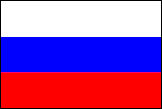
Offener Brief der PAD-Führung:
"Bangkok, Kingdom Thailand 14 July 2006 To the Prime Minister of the People"s Republic of China
the President of the French Republic
the Prime Minister of the State of Japan
the President of the Russian FederationFirst of all, the People"s Alliance for Democracy (PAD) wishes to apologize for sending this open letter to you, after the Kingdom of Thailand"s caretaker prime minister, Police Lieutenant Colonel Thaksin Shinawatra, traveled to several countries to explain the political situation in Thailand and there is evidence that he sent letters to some countries making misleading and derogatory allegations against the People"s Alliance for Democracy. PAD is an alliance of people"s organizations from all walks of life that has been calling for Pol Lt-Col Thaksin Shinawatra"s resignation as prime minister since last February.
The People"s Alliance for Democracy is worried that in the course of his visits to various countries Pol Lt-Col Thaksin Shinawatra may have made the same distortions and provided incorrect information to the leaders of those countries. If that was the case with you, we apologize once again, in the name of all Thai people, as the caretaker prime minister has shown that he does not know diplomatic usage, by explaining the domestic situation of Thailand to leaders of friendly countries without a specific request and outside of normal channels. Above all, we must apologize for Thailand"s caretaker prime minister making false statements for many times, as this is a most serious breach of manners between friendly countries. Furthermore, his statement also reflected his complete lack of understanding in the democratic process.
We wish to point out to you that the basic reason for our demonstrations demanding Pol Lt-Col Thaksin Shinawatra"s resignation as prime minister is that we are determined to uphold the democratic system of our country with His Majesty the King as Head of State. In the past five years that Pol Lt-Col Thaksin Shinawatra, as leader of the majority in the House of Representatives, has been in power, cases of corruption have multiplied, independent auditing mechanisms have been subverted and almost all members of both Houses of Parliament have been prevented from doing their duty, to the point that now the authentic spirit and substance of Thailand"s democratic system with His Majesty the King as Head of State has been almost entirely destroyed through the handiwork of a tyrant born out of elections.
Freedom of information and freedom of political expression are basic to the democratic system, but Pol Lt-Col Thaksin Shinawatra, as prime minister, has been using his political power to suppress and circumvent such freedoms to a large extent in order to comfort his own power, as a great number of concrete examples show. These cases have been exposed in people"s gatherings held in a peaceful, unarmed and nonviolent manner, which is a basic right of the people here as in other countries, to force Pol Lt-Col Thaksin Shinawatra to resign from the position of prime minister.
Pol Lt-Col Thaksin Shinawatra may have tried to tell you that he is the one who is endeavoring to uphold democracy by stressing that if he came back to exercise power again as caretaker prime minister it was to make sure that there would be a new round of elections - as if he were the only guardian and symbol of the democratic system in the country.
What Thai people, who believe strongly in the democratic model with His Majesty the King as Head of State, want to see is an efficient system of checks and balances, respect of the rights and freedoms of citizens, who are the collective holders of sovereignty, and, above all, equal and fair rules and regulations in the administration of the country, without recourse to unfair power to distort electoral mechanisms and to force civil servants to interfere in the electoral process and in the legislative system in favor of any one group, as had been the case for far too long. We also believe in the freedom of speech through free press and media because democracy can not live up to its virtue with out such requirement.
The People"s Alliance for Democracy thus takes this opportunity to set the record straight and hopes that this will contribute to the firm, durable and lasting friendship between our two peoples.
Respectfully yours,
The People"s Alliance for Democracy
Maj Gen Jamlong Srimueang [จำลอง ศรีเมือง, 1935 - ]
Mr Sondhi Limthongkul [สนธิ ลิ้มทองกุล / 林明達, 1947 - ]
Mr Phiphop Thongchai [พิภพ ธงชัย, 1945 - ]
Mr Somsak Kosaisuk [สมศักดิ์ โกศัยสุข, 1945 -]
Mr Somkiat Phongphaiboon [สมเกียรติ พงษ์ไพบูลย์, 1950 - ]
[Quelle: http://prachatai.com/journal/2006/07/8974. -- Zugriff am 2016-11-04]
2006-07-16
Fortune Magazine nennt die staatliche Erdöl- und Erdgasfirma PTT (ปตท.) als einzige Thai-Firma unter den 500 größten Firmen der Welt. PTT steht mit einem Umsatz von 878 Milliarden Baht (= $23,11 Milliarden) an 256. Stelle.
Abb.: ®Logo
[Bildquelle: Wikipedia]
"PTT Public Company ist ein thailändisches Unternehmen mit Firmensitz in Bangkok. Das Unternehmen wird vom thailändischen Staat kontrolliert. PTT Public Company fördert und verkauft Erdöl und Erdgas an seine Kunden. Es besitzt ein Pipelinenetzwerk im Golf von Thailand und verfügt über ein landesweites Tankstellensystem. PTT Public Company ist nach Fortune Global 500 der größte thailändische Konzern." [Quelle: http://de.wikipedia.org/wiki/PTT_Public_Company. -- Zugriff am 2011-12-28]
2006-07-17
General Sonthi Boonyaratglin (สนธิ บุณยรัตกลิน, 1946 - ) versetzt 126 Offiziere mittleren Rangs, die als Thaksin Shinawatra (ทักษิณ ชินวัตร, 1949 - ) nahestehend gelten. Die Hälfte von ihnen war Generälen der Abschlussklasse 10 der Armed Forces Academies Preparatory School (โรงเรียนเตรียมทหาร abbreviated รร.ตท) unterstellt, zu der Thaksin gute Beziehungen hat.
2006-07-21

Eine Operation am Rückgrat des Königs ist gut verlaufen.
2006-07-27
Premiere des Films Loveaholic (โคตรรักเอ็งเลย) von Ping Lumpraploeng (พิง ลำพระเพลิง, 1966 - )
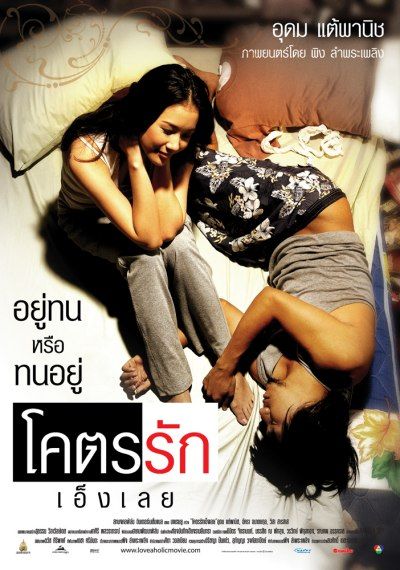
Abb.: Plakat
[Bildquelle: Wikipedia. -- Fair use]
|
"Loveaholic (Thai: โคตรรักเอ็งเลย or Khoht-rak-eng-loei) is a 2006 Thai romantic comedy film directed by Ping Lumpraploeng (พิง ลำพระเพลิง, 1966 - ) and starring Thai comedian Udom Taephanit (อุดม แต้พานิช, 1968 - ). SynopsisRong (รงค์), a comedy screenwriter, finds out his wife, Daeng (แดง), has had an affair with a physician. Rong's and Daeng's relationship had grown routine and boring, which was why Daeng had the affair. Rong quarrels with Daeng, who angrily drives away in her car. Later, Rong is told that his wife is dead. Grieving, he blames himself for her death. However, Rong notices that many things in the house are being moved around, and he starts to think that perhaps Daeng is not dead. Cast
[Quelle: http://en.wikipedia.org/wiki/Loveaholic. -- Zugriff am 2013-03-24] |
2006-07-28

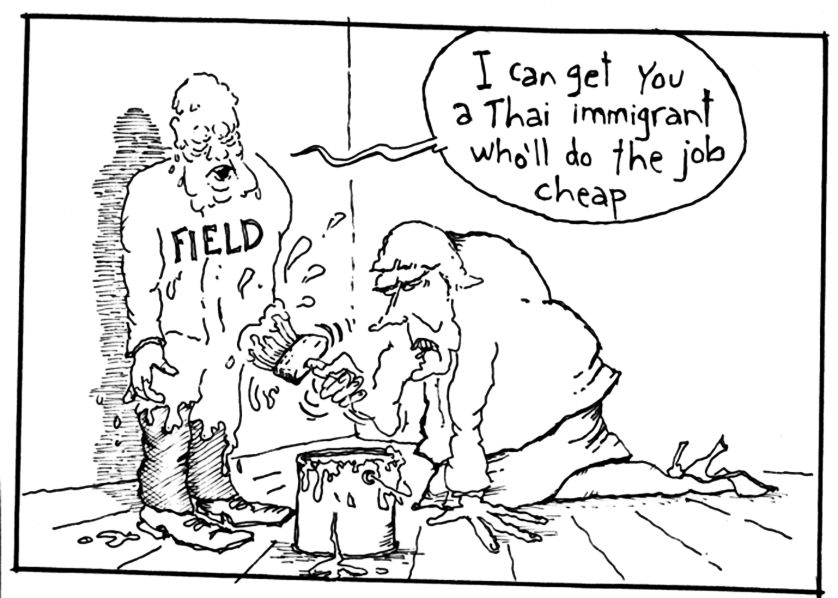
Abb.: "I can get you a Thai immigrant who'll do the
job cheap" / von Malcolm Walker (1950 - ), 2006
"Shows the Prime Minister
Helen Clark painting Taito Phillip Field. She is told by Field that he could get
a Thai immigrant to do the job of painting him cheaply. Refers to allegations of
Field improperly using his influence in obtaining a work permit for Thai workers."
[Bildquelle: FIELD. "I can get you a Thai immigrant who'll do the job cheap" 28 July 2006. Walker, Malcolm, 1950-:[Digital cartoons published from November, 2007 onwards plus a backlog of digital cartoons published in the Sunday Times]. Ref: DCDL-0009671. Alexander Turnbull Library, Wellington, New Zealand. http://natlib.govt.nz/records/22680300. -- "You can copy this item for personal use, share it, and post it on a blog or website. It cannot be used commercially without permission."]
2006-08 - 2006-09
Durex führt den Sexual Wellbeing Global Survey durch. [Quelle: http://www.durex.com/en-sg/sexualwellbeingsurvey/documents/swgspptv2.pdf. -- Zugriff am 2014-04-10]
Für Thailand:
- 1102 Personen werden 20 bis 30 Minuten lang interviewed
- Wöchentlich oder häufiger haben Sex:
- 66% der Männer
- 65% der Frauen
- Thais brauchen zum Sexualverkehr durchschnittlich 16,6 Minuten
- Beim Sex fühlen sich 63% der Thais voll respektiert
- 47% der Männer und 38% der Frauen finden ihr Sexualleben wirklich aufregend
- Für 33% der Thais war Sex schon einmal schmerzvoll
- 34% der Thailänderinnen hatten schon Vagina-Trockenheit
2006-08-01
Bodhi Garrett gründet in Khura Buri (คุระบุรี), Provinz Phang Nga (พังงา), Andaman Discoveries (AD).
Abb.: Lage von Khura Buri (คุระบุรี)
[Bildquelle: OpenStreetMap. -- Creative Commons Lizenz (Namensnennung, share alike)]
Abb.: ®Logo
[Bildquelle: Andamandisco / Wikipedia. -- GNU FDLicense]
Abb.: AD's Seifenprojekt in Ban Talae Nok (บ้านทะเลนอก), Provinz Ranong (ระนอง)
[Bildquelle: Andamandisco / Wikipedia. -- GNU FDLicense]
Abb.: Lage der Provinz Ranong (ระนอง)
[Bildquelle: OpenStreetMap. -- Creative Commons Lizenz (Namensnennung, share alike)]
"Andaman Discoveries (AD) is a community-based development project of North Andaman Tsunami Relief (NATR), a non-profit organization based in Thailand that provides assistance to tsunami-affected villages in the north Andaman Sea region. AD has assumed the work of NATR, fostering long-term social, economic, and environmental sustainability and generating viable economic opportunities via training and marketing. History
The Boxing Day tsunami hit in late 2004 and it was after this event that North Andaman Tsunami Relief (NATR), the parent organization of AD, was formed. Eighteen months later, AD came into existence as a development of the organization.
Andaman Discoveries was established on August 1, 2006 by Bodhi Garrett in Kuraburi (คุระบุรี), a small town located in Phang Nga Province (พังงา) in the south of Thailand.
MissionAD supports community-led development by acting as a bridge to visitors and volunteers through sponsorship of education, conservation, and cultural empowerment. [1]
ProjectsWith the help of volunteers and visitors, AD has been able to organize and sustain several in-village projects using existing funds and contributions to the Community Fund[2]. These projects include:
Sustainable LivelihoodsConservation
- Teaching English to kids, adults, guides, and host families
- Creative workshops with local children
- Hand-crafted soap and Batik cooperatives
Community Development
- Beach clearance and waste management
- Mangrove reforestation
- Wildlife and environmental conservation projects
- Orchid conservation
- Beautification of community or school gardens
- Interpretive nature trail data collection with local guides
- GPS land-use mapping
Partners
- Construction of a community center
- Long-term scholarships
- Teacher placement in local and village schools
- Teaching community aerobics or yoga
AD's partners include research firms, educational institutions, governmental branches, and NGOs alike and name the International Union for the Conservation of Nature and Natural Resources, Rotary International, University of California – Los Angeles, InterVol (University of Birmingham)[3], and The Mangrove Action Project as partners."
[Quelle: http://en.wikipedia.org/wiki/Andaman_Discoveries. -- Zugriff am 2012-04-07]
2006-08-08


NZZ: Thailand sucht Energiesicherheit in Burma : Umstrittener Besuch Thaksins bei der Militärjunta.
"In Bangkok hat man bis zum Wochenende gerätselt, wieso der amtierende Ministerpräsident Thailands, Thaksin Shinawatra, in der vergangenen Woche Hals über Kopf zu den burmesischen Machthabern nach Pyinmana (ပျဉ်းမနားမြို့) aufgebrochen war. Inzwischen hat sich der Schleier etwas gelüftet, hat doch das Presseorgan der Militärjunta, die «Myanmar Times», am Montag bestätigt, dass vor der Küste des südostasiatischen Landes ein weiteres, riesiges Feld mit Erdöl- und Erdgasvorkommen entdeckt worden ist. Entsprechendes war am Samstag von Thaksin angedeutet worden, der sich dabei auf einen Bericht der staatlichen PTT Exploration & Production (PTTEP) berief, einer Tochtergesellschaft des größten thailändischen Energiekonzerns, PTT. [...]
Der Reise Thaksins kommt auch aus militärischer Sicht Bedeutung zu, führt die burmesische Armee im Süden des Landes doch seit Monaten einen Vertreibungsfeldzug gegen die Minderheit der Karen (ကရင်လူမျိုး) durch, deren jahrzehntelanger Widerstand nur über direkte oder indirekte Hilfe über thailändischen Boden am Leben erhalten werden kann. In diesem Zusammenhang fällt jedenfalls auf, dass der Kommandierende der thailändischen Streitkräfte Thaksin auf dem Fuß folgte und zu einem Besuch nach Burma aufgebrochen ist. Während man in Bangkok die wirtschaftlich inspirierte Pflege des nachbarschaftlichen Verhältnisses als Zeichen sieht, dass Thaksins Wille zur Führung des Landes wieder erwacht ist, befürchten andere Kreise, dass sich das Los der von der burmesischen Armee verfolgten Karen und von deren Widerstandsorganisation KNLA (ကရင်အမျိုးသား လွတ်မြောက်ရေး တပ်မတော်) damit nicht unbedingt verbessern dürfte."
[Quelle: NZZ Internationale Ausgabe. -- 2006-08-08. -- S. 17. -- Fair use]
Abb.: Lage von Pyinmana (ပျဉ်းမနားမြို့)
[Bildquelle: OpenStreetMap. -- Creative Commons Lizenz (Namensnennung, share alike)]
2006-08-10
Premiere des Films Mercury Man (มนุษย์เหล็กไหล) von Bhandit Thongdee (บัณฑิต ทองดี, 1971 - )
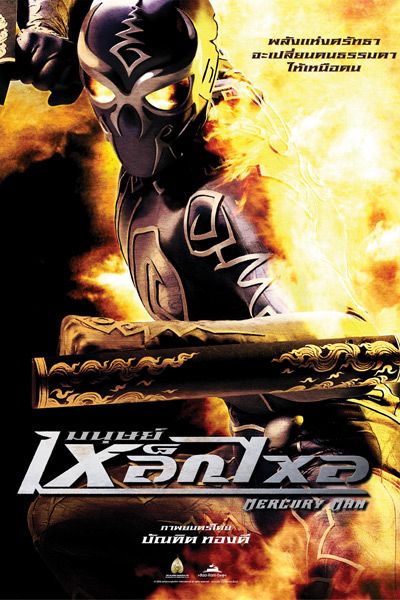
Abb.: Plakat
[Bildquelle: Wikipedia. -- Fair use]
|
Mercury Man (Thai: มนุษย์เหล็กไหล or Ma noot lhek lai) is a 2006 Thai superhero martial arts action film. It is directed by Bhandit Thongdee (บัณฑิต ทองดี, 1971 - ) with martial arts choreography by Panna Rittikrai (พันนา ฤทธิไกร, 1961 - ) of Ong-Bak, (องค์บาก, 2003), Tom-Yum-Goong (ต้มยำกุ้ง, 2005) and Born to Fight (เกิดมาลุย, 2004). PlotAfter being stabbed with an ancient Tibetan amulet, a Bangkok firefighter named Chan (ณาน) is transformed into a superhero when his body becomes a massive heat source, which he learns to manipulate to give him super strength, increased agility and the ability to make great leaps. Chan's fate is entwined with an Afghan terrorist, Osama bin Ali (อุสม่าห์), who wants the power of the Tibetan amulet to use in a plot to destroy the United States. With his international terrorist organization, led by henchwoman Areena (อารีน่า), Osama kidnaps Chan's mother and transsexual sister (Played by famed transsexual Thai kickboxer Nong Toom - น้องตุ้ม, credited as Parinya Kiatbusaba) and takes them to the Royal Thai Navy base, where he hopes to launch a rocket at a US Navy chemical weapon ship. Osama also has suicide bombers spread out throughout Thailand, stationed in American franchises in Thailand, ready to act on his word. Aided by the young female guardian of the amulet, Chan rescues his mother and sister. However, he must face Areena, who has stabbed herself with a companion amulet, giving her the powers of extreme cold and ice. Starring
Similar to Ong-Bak, which was also choreographed by Panna Rittikrai and produced by Prachya Pinkaew, Mercury Man contains "shout outs" to Western films. References to Spider-Man are seen throughout Mercury Man, in dialogue, in Spider-Man T-shirts worn by extras and through spray-painted messages in the scenery, such as "Spidy how R U?"[2] SoundtrackArnon Saisangchan (Osama bin Ali), is the lead singer of the Thai rock band Blackhead (แบล็คเฮด). Known as Phu Blackhead, he sings the song heard over the closing credits. [Quelle: http://en.wikipedia.org/wiki/Mercury_Man_%28film%29. -- Zugriff am 2013-03-24] |
2006-08-16
Tak (ตาก): 100 Forstbeamte und Ranger, greifen eine Protestdemonstration von Gelbhemden (เสื้อเหลือง, PAD - พันธมิตรประชาชนเพื่อประชาธิปไตย) an. Anführer ist Saneh Thipburi, der Chef der Forstbehörde der Provinz Tak. Die Polizei greift ein und verhindert Gewalttätigkeiten.
2006-08-21
Kampf zwischen Unterstützern Ministerpräsident Thaksins und Gelbhemden (เสื้อเหลือง) beim Central World Plaza (เซ็นทรัลเวิลด์) . Die Gelbhemden demonstrieren gegen Thaksin, der dort ein Digital Learning Center eröffnet.
2006-08-23
Premiere des Films Seasons Change (เพราะอากาศเปลี่ยนแปลงบ่อย) von Nithiwat Tharathorn (นิธิวัฒน์ ธราธร, 1974 - )
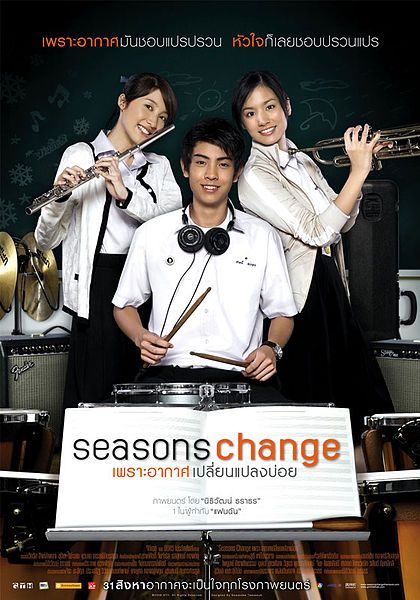
Abb.: Plakat
[Bildquelle: Wikipedia. -- Fair use]
|
"Seasons Change (Thai: เพราะอากาศเปลี่ยนแปลงบ่อย, or Phror arkad plian plang boi) is 2006 Thai romantic comedy film directed by Nithiwat Tharathorn Premiere des Films Seasons Change (เพราะอากาศเปลี่ยนแปลงบ่อย) von Nithiwat Tharathorn . PlotThe story takes place at the College of Music, Mahidol University (วิทยาลัยดุริยางคศิลป์ มหาวิทยาลัยมหิดล) over one year and covers the three seasons that Bangkok typically experiences – summer, winter and monsoon. It chronicles the life of a young high school student, Pom (ป้อม), and his impulsive decision to attend a music school, unknown to his parents, because of a girl he has secretly liked for three years, Dao (ดาว). At the music school, he befriends Aom (อ้อม), who eventually becomes his best friend at the academy. As a talented rock drummer he aids a wise Japanese instructor, Jitaro (จิทาโระ) in research. He also forms a rock band with two friends, Ched (เฉด) and Chat (ฉัตร). However, in order to become closer to the talented violinist Dao (ดาว), he joins the orchestra and is assigned by the feisty conductor, Rosie (โรซี่), to play timpani. Eventually, as time schedule collides, he is forced to choose between playing in a rock band or the orchestra, and is also forced to choose between his crush on Dao, or his best friend, Aom. Cast
This movie was generally well received by its target audience, and it quickly became a favourite among Thai adolescents for its loveable characters whom many found easy to relate to. The soundtrack was also popular among teenage movie-goers as it borrowed from a hit single by pop singer-songwriter Boyd Kosiyabong (ชีวิน (บอย) โกสิยพงษ์, 1967 - ). Film critic Sorradithep Supachanya wrote: "The story is clearly cliché and the title hopelessly unoriginal (it shares the title with one of the most popular, and overplayed, Thai songs in the country’s pop music history); yet, with the director’s brilliant mix of picturesque landscapes, beautiful music, and plenty of harmless humour, Seasons Change turns out fresh, sweet, and heartwarmingly enjoyable".[1]" [Quelle: http://en.wikipedia.org/wiki/Seasons_Change_%28film%29. -- Zugriff am 2013-03-24] |
2006-09-01
Abb.: Chamlong Srimuang (จำลอง ศรีเมือง, 1935 n- ) spricht vor dem 14th Thailand Weekly (Political Concert) zu den Gelbhemden (เสื้อเหลือง), Lumphini Park (สวนลุมพินี), Bangkok, 2006-09-01
[Bildquelle: Lerdsuwa / Wikimedia. -- GNU FDLicense]
Abb.: Lage des Lumphini Park (สวนลุมพินี)
[Bildquelle: OpenStreetMap. -- Creative Commons Lizenz (Namensnennung, share alike)]
2006-09-01

NZZ: Thailands Süden kommt nicht zur Ruhe : Warnungen vor Unregierbarkeit und Spaltung des Landes.
"Die Serie von Bombenanschlägen in den drei muslimischen Provinzen im Süden Thailands, wo in den vergangenen zweieinhalb Jahren etwa 1500 Personen ums Leben gekommen sind, reißt nicht ab. Am Donnerstag explodierten vor 23 Bankfilialen in der Provinz Yala (ยะลา) selbstgebastelte Bomben, die zwei Todesopfer und Dutzende von Verletzten forderten. Die koordinierten Detonationen ereigneten sich kürz vor Mittag innerhalb von fünf Minuten. Täter in Schuluniformen gekleidet
Nach Angaben der Polizei wurden die Anschläge von Jugendlichen ausgeführt, die in Schuluniformen gekleidet waren. Sie deponierten Säcke mit Schulmaterial, ausgehöhlten Büchern und Handtaschen vor Geldausgabeautomaten; bei den meisten Opfern handelt es sich um Personen, die bei den Automaten Geld abheben wollten. Zwei Jugendliche konnten verhaftet werden, bevor die Sprengkörper, die mit Handys gezündet wurden, explodierten. In einem Fall ging eine telefonische Warnung bei einer Bank ein, worauf das betreffende Gebäude geräumt wurde.
Nach den Anschlägen wurden sämtliche Banken und die meisten Schulen der Provinz geschlossen. Die Schließung der Schulen wurde angeordnet, weil bewaffnete Separatisten in der Vergangenheit immer wieder Geiselnahmen in Schulhäusern und gezielte Anschläge auf Lehrer verübten. Meistens handelte es sich dabei um Einzelaktionen, bei denen auch andere Vertreter der Staatsgewalt ums Leben kamen, vor allem Soldaten und Polizisten. In letzter Zeit versuchen die Aufständischen indessen vermehrt, ihre Schlagkraft durch koordinierte Attacken unter Beweis zu stellen. Sicherheitskräfte befürchten, dass es nur ein Frage der Zeit sei, bis sich die Separatisten auch in der thailändischen Hauptstadt Bangkok bemerkbar machten.
Die Anschläge gehen mit größter Wahrscheinlichkeit auf das Konto der muslimischen Separatistenorganisation Bersatu (เบอร์ซาตู). Deren Drahtzieher werden in der südthailändischen Stadt Hat Yai (หาดใหญ่) vermutet. Die Organisation zählt nach Schätzungen rund 1000 gewaltbereite Anhänger, die für einen eigenen muslimischen Staat kämpfen. Die Organisation wehrt sich ferner dagegen, dass in den Schulen im Süden nicht mehr in der ursprünglich in den Provinzen gesprochenen malaiischen Sprache unterrichtet werden darf. Die Gewalt im Süden eskalierte, nachdem Bangkok die Sonderverwaltung für die drei Grenzprovinzen abgeschafft hatte."
[Quelle: NZZ Internationale Ausgabe. -- 2006-09-01. -- S. 3. -- Fair use]
Abb.: Lage der Provinz Yala (ยะลา)
[Bildquelle: OpenStreetMap. -- Creative Commons Lizenz (Namensnennung, share alike)]
2006-09-02/18
Abb.: Überschwemmungen 2006-09-02/18
[Bildquelle: Elaine K. Anderson ; G. R. Brakenridge. -- http://www.dartmouth.edu/~floods/images/2006175ChaoPraya.jpg. -- Zugriff am 2012-10-24. -- Creative Commons Lizenz (Namensnennnung)]
2005-09-16
Bombenanschläge auf das Touristenviertel in Hat Yai (หาดใหญ่): 4 Tote, 82 Verletzte. Die Ziele:
- Big C Supermarkt
- Lee Gardens Hotel
- Monkey Pub
- Odeon Shopping Mall
- eine Kino-Toilette beim Diana Supermarkt
Abb.: Lage von Hat Yai (หาดใหญ่)
[Bildquelle: OpenStreetMap. -- Creative Commons Lizenz (Namensnennung, share alike)]
2006-09-19

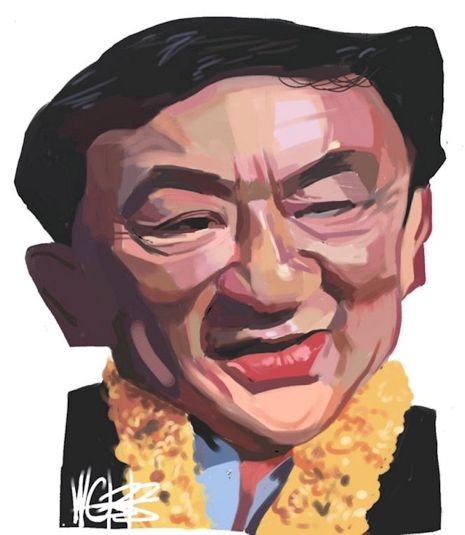
Abb.: Ministerpräsident Thaksin / von Webb Murray
(1947 - ), 2005
[Bildquelle: Webb, Murray, 1947-. Webb,
Murray, 1947- :Thaksin Shinawatra [ca 8 February, 2005]. Ref: DX-101-002.
Alexander Turnbull Library, Wellington, New Zealand.
http://natlib.govt.nz/records/22806682.
-- "You can copy this item for personal use, share it, and post it on a blog or
website. It cannot be used commercially without permission"]
Während Ministerpräsident Thaksin bei der Vollversammlung der UNO in New York (USA) ist, putscht das Militär.
Der Putsch kostet 1,5 Milliarden Baht, ein großer Teil davon fließt in die Taschen der Putschisten. Mit 556 Mio. Baht wird eine neue Spezialeinheit aus 14.000 Soldaten gebildet, die Protestaktionen gegen die Regierung unterdrücken soll. 319 Mio. Baht werden für eine geheime Militäreinheit ausgegeben, die bei der Bevölkerung für Unterstützung der Putschregierung werben soll.
Vor dem Putsch waren Mitglieder der Abschlussklasse 21 (1972) der Chulachomklao-Militärakademie (โรงเรียนนายร้อยพระจุลจอมเกล้า) auf strategisch wichtige Posten befördert worden.

Am Vorabend des Putschs haben die Putschisten laut CNN (2006-09-22) eine Audienz beim König
Abb.: Lage von New York (USA)
[Bildquelle: OpenStreetMap. -- Creative Commons Lizenz (Namensnennung, share alike)]
Abb.: Panzer gegen das Volk: M41 Walker Bulldog, Bangkok, 2006-09-24
[Bildquelle: Roger jg / Wikipedia. -- Creative Commons Lizenz (Namensnennung, share alike)]
Abb.: Royal Thai Army (กองทัพบกไทย), 2006-09-19
[Bildquelle: goshen 42 / Wikipedia. -- Creative Commons Lizenz (Namensnennung, share alike)]
"The 2006 Thai coup d'état took place on Tuesday 19 September 2006, when the Royal Thai Army (กองทัพบกไทย) staged a coup d'état against the elected caretaker government of Prime Minister Thaksin Shinawatra (ทักษิณ ชินวัตร). The coup d'état, which was Thailand's first non-constitutional change of government in fifteen years, followed a year-long political crisis involving Thaksin, his allies and political opponents and occurred less than a month before nation-wide House elections were originally scheduled to be held. It has been widely reported in Thailand and elsewhere that General Prem Tinsulanonda (เปรม ติณสูลานนท์), Chairman of the Privy Council (คณะองคมนตรีไทย) was the mastermind of the Coup. The military cancelled the upcoming elections, abrogated the Constitution (รัฐธรรมนูญแห่งราชอาณาจักรไทย), dissolved Parliament (รัฐสภาไทย) and Constitutional Court (ศาลรัฐธรรมนูญ), banned protests and all political activities, suppressed and censored the media, declared martial law nationwide, and arrested Cabinet members. The new rulers, led by general Sonthi Boonyaratglin (สนธิ บุญยรัตกลิน, 1946 - ) and organised in a Council for Democratic Reform (CDR, คณะปฏิรูปการปกครองในระบอบประชาธิปไตย อันมีพระมหากษัตริย์ทรงเป็นประมุข), issued a pronunciamiento on 21 September setting out their reasons for taking power and giving a commitment to restore democratic government within one year. However, the CDR also announced that after elections and the establishment of a democratic government, the council would be transformed into a permanent Council of National Security whose future role in Thai politics was not explained. The CNS later drafted an interim charter and appointed retired General Surayud Chulanont (สุรยุทธ์ จุลานนท์, 1943 - ) as Premier. Martial law was lifted in 41 of Thailand's 76 provinces on 26 January 2007 but remained in place in another 35 provinces. Elections were held on 23 December 2007, after a military-appointed tribunal outlawed the Thai Rak Thai party (พรรคไทยรักไทย) of Thaksin Shinawatra and banned TRT executives from contesting in elections for 5 years.
Events Earlier planning and rumoursPlanning for the coup started in approximately February 2006. Rumors about unrest in the armed forces and possible takeover plots unfurled for months leading to the pronunciamiento. In May 2006, General Sonthi Boonyaratglin issued assurances that the military would not seize power. On 20 July 2006, around a hundred middle-ranking army officers said to be supporters of Thaksin were reassigned by the army high command, fuelling rumors that the army was divided between supporters and opponents of the prime minister. In July 2006, 3rd Army Area Commander Saprang Kalayanamitr (พลเอก สพรั่ง กัลยาณมิตร, 1948 - )gave an interview where he stated that Thai politics was below standard and that the Kingdom's leadership was weak. He also claimed that Thailand had a false democracy. The public was becoming alarmed with each fresh rumor. On 15 July 2006 a democratic activist, Tavivoot Chulavachana (ทวีวุฒิ จุลวัจนะ), posted an open letter in Thailand's most popular political web-board, citing military sources, saying the military and Sondhi Limthongkul (สนธิ ลิ้มทองกุล / 林明達) were conspiring to stage a takeover to rid the country of Thaksin, and then return power to the people—after a period of cleansing the country. In August 2006, there were reports of tank movements near Bangkok, but the military attributed these to a scheduled exercise. In early September, Thai police arrested five army officers, all members of Thailand's counter-insurgency command, after intercepting one of the officers with a bomb in a car allegedly targeting the prime minister's residence. Three of the suspects were released after the coup.
In December 2006, former National Security Council head Prasong Soonsiri (นาวาอากาศตรีประสงค์ สุ่นศิริ) claimed that he and five other senior military figures had been planning a coup as early as July. He claimed that Sonthi was one of those figures, but that Surayud and Prem were not involved at the time.
Day one (Tuesday)On the evening of 19 September 2006, the Thai military and police overthrew the elected government of Prime Minister Thaksin Shinawatra. At the time, the premier was in New York City for a meeting of the United Nations General Assembly.
- At 18:30, Royal Thai Army Special Forces units moved from Lopburi province to Bangkok. At the same time, Prem Tinsulanonda, Privy Council President, had an audience with King Bhumibol Adulyadej, reportedly concerning a merit-making ceremony for Bua Kitiyakara (หม่อมหลวง บัว กิติยากร), the King's mother-in-law.
- By 21:00, the Special Forces units arrived in Bangkok.
- Around 21:30, Army-owned television broadcaster Channel 5 ceased scheduled programming and aired songs authored by King Bhumibol. By this time, rumours started spreading that the military had arrested Deputy Prime Minister in charge of national security Chitchai Wannasathit (ชิดชัย วรรณสถิตย์) and Defence Minister Thammarak Isaragura na Ayuthaya (ธรรมรักษ์ อิศรางกูร ณ อยุธยา), and that Thaksin's son had left the country. National radio, terrestrial TV, cable TV and some satellite broadcasters were taken off air shortly after (see below).
- At 21:40, police commandos arrived at the residence of Thaksin. Army tanks soon took position throughout Bangkok.
- At 22:20, Thaksin declared a state of emergency by telephone from New York. He transferred General Sonthi Boonyaratglin from his post as Army Commander to a position at the Prime Minister's Office and appointed Supreme Commander General Ruangroj Mahasaranon (เรืองโรจน์ มหาศรานนท์) to take control of the crisis. His declaration, broadcast on television, was cut immediately afterwards.
At 23:00 Thawinan Khongkran (ทวินันท์ คงคราญ), Miss Asia 1987 and head of Public Relations for Army-owned television station Channel 5,announced on TV that military and police units had Bangkok and the surrounding areas under control:
“ The armed forces commander and the national police commander have successfully taken over Bangkok and the surrounding area in order to maintain peace and order. There has been no struggle. We ask for the cooperation of the public and ask your pardon for the inconvenience. Thank you and good night. ” The junta initially called the Council for Democratic Reform under Constitutional Monarchy (CDRM) later took the name of Council for Democratic Reform to rule out suspicions about the role of the monarchy.
- At 23:50, the CDR issued a second statement explaining the reasons for the coup d'état and wished "to reaffirm that it has no intention to become the administrators of the country." The Council promised to retain the king as head of state and to return administrative power to the Thai people "as quickly as possible."
- By 00:39 a third statement suspended the constitution and dissolved the Cabinet, both houses of Parliament, and the Constitutional Court.
Foreign news channels, such as BBC World, CNN, CNBC and Bloomberg Television, were reported to have been taken off air, although foreign broadcasters were still able to broadcast from Bangkok. Telecommunications networks (telephone and the Internet) were operational.
The Army declared martial law nationwide, ordered all soldiers to report to their barracks and banned troop movements unauthorised by the CDR. Television footage showed heavily armed troops in M113 armored personnel carriers and M998 HMMWV vehicles on the streets of the city. Many soldiers and military vehicles wore strips of yellow cloth as a symbol of loyalty to the king, whose royal color is yellow.
Junta commander Sonthi Boonyaratglin confirmed that Deputy Prime Minister Chitchai Wannasathit and Defence Minister Thammarak Isaragura na Ayuthaya had been arrested. High-ranked civil servants were ordered to report to the Council while government offices and banks would be closed on 20 September.
A few hours after news of the coup broke, BBC News reported that the leader of the coup would be meeting with the King later in the day, although it was unclear at that time what King Bhumibol's position on the coup was.
Day two (Wednesday)
- At 01:30 (20:30 UTC) on 20 September it was announced that the Prime Minister had cancelled his speech at the United Nations. The prime minister watched his downfall on television from a hotel in New York. Tom Kruesopon, an TRT member and an adviser Thaksin, said the premier "has not given up his power. He is not seeking asylum."
- At 09:16 General Sonthi Boonyaratglin announced in a television conference that the military had needed to seize power in order to unite the nation after months of political turmoil:
“ We have seized power. The constitution, the Senate, the House of Representatives, the Cabinet and the Constitutional Court have all been dissolved. We agreed that the caretaker prime minister has caused an unprecedented rift in society, widespread corruption, nepotism, and interfered in independent agencies, crippling them so they cannot function. If the caretaker government is allowed to govern it will hurt the country. They have also repeatedly insulted the king. Thus the council needed to seize power to control the situation, to restore normalcy and to create unity as soon as possible. ” Shortly after this announcement, Thai TV programmes resumed whilst cable TV partly resumed. However, main foreign news channels (CNN, BBC, CNBC, NHK and Bloomberg) remained blacked out.
- At 12:14 Coup authorities demanded the cooperation of mass media, and later asked the Information and Communications Technology ministry (ICT) to control the distribution of all media information deemed harmful to the provisional military council.[25]
- By 14:50, the 1997 Constitution of the Kingdom of Thailand (also known as the "People's Constitution") was removed from the website of the National Assembly of Thailand.
The country's northern border with Laos and Myanmar was closed for a couple of days.
In an interview given before leaving New York for London with Deputy Prime Minister Surakiart Sathirathai (สุรเกียรติ์ เสถียรไทย), spokesman Surapong Suebwonglee, and his personal assistant Padung Limcharoenrat, Thaksin Shinawatra said:
“ I didn't expect that this will happen. I came here as Prime Minister but left as an unemployed man. It's fine that no one gives me a job. I volunteered to work but they didn't want to give me job, so it's fine. ” Thaksin was escorted to his home in Kensington where he joined his daughter Pinthongta, who is studying in London.[29] A Foreign Office spokeswoman said that Thaksin's trip was a private visit.
- At 15:35, junta leader Sonthi Boonyaratglin announced that the military had no plan to seize the personal assets of Prime Minister Thaksin Shinawatra and no plans to seize shares of Shin Corporation back from Temasek Holdings. Early in 2006, Thaksin sold his family's shares in Shin Corporation to Temasek.
- At 20:17 General Sonthi announced in a television statement that King Bhumibol Adulyadej had endorsed him as the head of the interim governing council. He also promised to restore democracy in a year's time.
Late in the evening, a spokesman of the CDR announced that the king has issued a royal command to appoint Gen Sonthi Boonyaratglin as the CDR president.
Contradicting earlier announcements, the CDR issued a 13th statement maintaining the status of the newly selected Election Commission and adding that the EC ACT would organize the election of local administrations and councils.
The Council for Democratic Reform then issued its seventh order dividing responsibilities into four divisions as part of responsibility sharing. The four divisions are the CDR, the secretariat, the advisory division, and the special affairs division.
Day three (Thursday)The files and papers related to the investigation of the alleged car bomb plot against Mr Thaksin (24 August 2006) vanished from the Crime Suppression Division (CSD) Tuesday night around 21:30. Police loyal to deputy police chief Pol Gen Priewphan Damapong (brother of ousted Prime Minister Thaksin Shinawatra's wife Khunying Potjaman) were also seen loading assault weapons from the CSD in vehicles that went off to an unknown destination.
In the afternoon, Thailand's coup leader ordered media executives to army headquarters to tell them to stop carrying expression of public opinion following the military takeover. The move came after the military imposed strict controls on the media and said they would block information deemed harmful to the provisional military council now in control of Thailand. The army official said the normal television programming will be resumed but the council would begin making its own televised announcements every two hours starting from 11:00 am (0400 GMT).
RTA Troops and tanks began the process of reducing their presence at key government facilities. Four tanks remained at Government House early Thursday, down from 10 the previous day, and fewer armed soldiers are on guard. "As of now we have only two companies of troops — some 50 to 60 — deployed at Government House but total withdrawal is up to the army commander because there is not yet complete trust in the situation," Lieutenant Romklao Thuwatham.
Thailand's coup leader ordered two more top aides, Newin Chidchob (เนวิน ชิดชอบ), the minister attached to the premier's office, and Yongyuth Tiyapairat, minister of natural resources and environment, to deposed Prime Minister Thaksin Shinawatra to report to the military, one day after detaining his senior deputy. "They must report themselves to the Council for Political Reform at Army Headquarters" at noon (0500 GMT) Thursday, the order said, referring to the provisional body the coup leaders have set up.
Ousted deputy prime minister Somkid Jatusripitak arrived at the Don Muang International Airport returning from France.
The chartered Thai Airways jet that took ousted prime minister Thaksin Shinawatra to New York and later to London returned to the Don Muang Military Airport after being diverted from Bangkok's commercial airport. Onboard the plane were some 20 members of the press corps and low-ranking officials who had travelled with him. 10 heavily armed commandos immediately surrounded the plane and conducted an inspection. All were released after their passports were stamped.
Ousted Thai premier Thaksin Shinawatra called for new snap elections in his homeland and confirmed he is bowing out of politics, urging "national reconciliation" after the coup in Bangkok. In a statement issued in London, Thaksin said he will devote himself to development and possibly charity work.
“ We hope the new regime will quickly arrange a new general election and continue to uphold the principles of democracy for the future of all Thais." ” [Quelle: http://en.wikipedia.org/wiki/2006_Thai_coup_d%27%C3%A9tat. -- Zugriff am 2012-01-06]
In der Folge des Putschs nehmen Homosexuellenlokale in Bangkok zu.
2006-09-19 - 2006-10-01
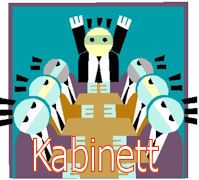
Council for National Security (คณะมนตรีความมั่นคงแห่งชาติ) unter Leitung von General Sonthi Boonyaratglin (สนธิ บุญยรัตกลิน, 1946 - )
2006-09-20
Die erste Widerstandsgruppe, die sich bildet, ist das Anti 19 September Coup Network, unter der Führung des NGO-Aktivisten Sombat Boon-ngamanong (สมบัติ บุญงามอนงค์, aka Bo.Ko. Lai Chud - บ.ก.ลายจุด, 1968 - )
Abb.: Sombat Boon-ngamanong (สมบัติ บุญงามอนงค์, aka Bo.Ko. Lai Chud - บ.ก.ลายจุด), 2007
[Bildquelle: Markpeak / Wikimedia. -- GNU FDLicense]Als eine der ersten Widerstandsgruppen bildet sich Saturday People Against Dictatorship (กลุ่มคนวันเสาร์ไม่เอาเผด็จการ). Die Mitglieder haben sich über das Internet kennengelernt. Anführer ist Suchart Nakbangsai (สุชาติ นาคบางไทร aka. Worawut Thanangkorn - วราวุธ ฐานังกรณ์). Die erste Demonstration dieser Gruppe auf dem Sanam Luang (สนามหลวง) findet am 2006-11-01 statt unter dem Namen D-Code. Die Gruppe gibt ihr eigenes Jatukham-Ramathep-Amulett (จตุคามรามเทพ) heraus, erschwinglich für jeden zum sensationellen Preis von nur 1 Baht. Viele Protestierende gegen die Diktatoren tragen in der Folgezeit dieses Amulett am Hals.
Abb.: ®Logo
Abb.: Jatukham-Ramathep-Amulett für 1 Baht (จตุคามรามเทพ ๑ บาทปราบกบฏ)
[Bildquelle: th.Wikipedia. -- Fair use]
Abb.: Suchart Nakbangsai (สุชาติ นาคบางไทร aka. Worawut Thanangkorn - วราวุธ ฐานังกรณ์)
[Bildquelle: http://deangchiangmai.blogspot.de/2010/11/blog-post_04.html. -- Zugriff am 2015-01-19. -- Fair use]Eine weitere Widerstandsgruppe, die kurz nach dem Putsch gegründet wird, ist นกพิราบสีขาว ("Weiße Taube")
2006-09-22

Bangkok Post: Coup leaders get 'official' royal endorsement
"(dpa) - Thailand's coup leaders on Friday received an official royal endorsement as the country's ruling junta in a ceremony broadcast on Thai television.
His Majesty the King Bhumibol Adulyadej, who is head of state, on Wednesday informally endorsed coup leader and the Army's commander-in-chief, General Sonthi Boonyaratklin [สนธิ บุญยรัตกลิน, 1946 - ], as head of the junta.
On Friday, Sonthi and members of his Council for Democratic Reform under Constitutional Monarchy [คณะปฏิรูปการปกครองในระบอบประชาธิปไตยอันมีพระมหากษัตริย์ทรงเป็นประมุข], as the junta has styled itself, received an official endorsement as the country's new rulers in a ceremony performed in front of a portrait of the king.
"For the sake of stability, we ask the people to be at ease and to obey the instructions of General Sonthi," according to a statement said to be from the king and delivered in a swearing-in ceremony for the junta although the monarch was not himself present.
The ceremony was broadcast on all Thai TV stations, which are now under the control of the council."[Quelle: http://www.thailandqa.com/forum/showthread.php?11230-Coup-leaders-get-official-royal-endorsement. -- Zugriff am 2015-01-18. -- Fair use]
2006-09-26

Shinzō Abe (安倍 晋三, 1954 - ) wird Ministerpräsident Japans.
Abb.: Shinzō Abe (安倍 晋三), 2007
[Bildquelle: Gryffindor / Wikipedia. -- Public domain]
2006-09-28
Eröffnung des Suvarnabhumi International Airport (ท่าอากาศยานสุวรรณภูมิ).
Abb.: Lage des Suvarnabhumi International Airport (ท่าอากาศยานสุวรรณภูมิ)
[Bildquelle: OpenStreetMap. -- Creative Commons Lizenz (Namensnennung, share alike)]
Abb.: Suvarnabhumi International Airport (ท่าอากาศยานสุวรรณภูมิ)
[Bildquelle: ©Google earth. -- Zugriff am 2012-01-09]
Abb.: Suvarnabhumi International Airport (ท่าอากาศยานสุวรรณภูมิ)
[Bildquelle: Roger Price. -- http://www.flickr.com/photos/83555001@N00/2725869384. -- Zugriff am 2012-01-09. -- Creative Commons Lizenz (Namensnennung)]
"Der Suvarnabhumi International Airport (Thai: ท่าอากาศยานสุวรรณภูมิ, Aussprache: tʰâː aː.gàːt.sà.jaːn sù.wan.ná.pʰuːm – Suwannaphum), auch New Bangkok International Airport (NBIA) bzw. Second Bangkok International Airport (SBIA), ist ein internationaler Großflughafen bei Bang Phli (บางพลี) in der Provinz Samut Prakan (สมุทรปราการ) in Thailand. Suvarnabhumi bedeutet das Goldene Land.
Er liegt etwa 30 Kilometer östlich der Hauptstadt Thailands, Bangkok. Mit 42,78 Millionen Passagieren im Jahr 2010 gehört er zu den größten Flughäfen in Asien und belegt im weltweiten Ranking Platz 17.Bei einem Frachtumschlag von 1,3 Mio. MT lag er 2010 auf Platz 20. Ausserdem zählt der Flughafen laut Skytrax zu den besten Flughäfen der Welt: 2010 landete er auf Platz 10. Weitere Auszeichnungen bekam er 2010 von ACI, Smarttravelasia.com, Centre for Asia Pacific Aviation (CAPA).Geschichte Planung und Bau
Erste Planungen zum Bau eines neuen Bangkoker Flughafens wurden bereits in den 1960er Jahren erarbeitet. Wirtschaftskrisen, wechselnde Regierungen, ineffiziente Behörden und nicht zuletzt auch die Korruption verzögerten die Umsetzung der Planungen aber für mehr als 30 Jahre. Thailändische Stellen bezeichneten das Projekt auch als das am längsten dauernde Flughafenprojekt der Welt. Das Grundstück im Nong Ngu Hao (หนองงูเห่า, zu deutsch Kobrasumpf) wurde bereits 1973 erworben.
Erst als der bisherige Bangkoker Flughafen Don Mueang (ท่าอากาศยานดอนเมือง) Anfang der 1990er Jahre zunehmend seine Auslastungsgrenzen wegen fehlender baulicher Erweiterungsmöglichkeiten erreichte, fiel der Startschuss zum Bau des neuen Flughafens. Dieser sollte nicht nur der bedeutendste Flughafen Südostasiens werden, er sollte zugleich modernen technologischen Ansprüchen genügen und ein Wahrzeichen des wirtschaftlich aufstrebenden Thailands bzw. seiner Hauptstadt darstellen.
Aus einem internationalen Architektenwettbewerb ging das Chicagoer Architekturbüro Murphy/Jahn unter Leitung des deutsch-amerikanischen Architekten Helmut Jahn 1994 als Sieger hervor. Zwei Jahre später wurde mit einigen Schwierigkeiten die New Bangkok International Airport-Gesellschaft gegründet. Es dauerte allerdings aufgrund politischer und wirtschaftlicher Umstände (insbesondere auch der Wirtschaftskrise 1997) weitere sechs Jahre, ehe im Januar 2002 mit den Bauarbeiten begonnen werden konnte.
Während der ersten Betriebsphase, als der Flughafen ab 2005 teilweise bereits eingeschränkt funktionsfähig war, wie auch während der Testphase, wurde dem Airport der provisorische IATA-Code NBK zugeteilt. Mit der Inbetriebnahme wurde der IATA-Code BKK vom bisherigen Flughafen Don Mueang International Airport übernommen. Der Name Suvarnabhumi (sprich sù-wan-ná-pʰuːm) wurde von König Bhumibol Adulyadej (Rama IX.) gewählt und bedeutet goldenes Land.
BaukostenDie Baukosten beliefen sich auf 120 Milliarden Baht. Das entspricht etwa 3,8 Milliarden US-Dollar beziehungsweise 2,4 Milliarden Euro (Wechselkurse vom 23. April 2008). Bis heute sind Korruptionsvorwürfe bei der Auftragsvergabe einzelner Bauunternehmer nicht ausgeräumt.
Aufnahme des FlugbetriebsDer Flughafen hat am 28. September 2006 um 03:00 Uhr den Betrieb aufgenommen und ist damit der modernste Flughafen Asiens. Die ersten Flugzeuge steuerten bereits am Abend des 15. September den neuen Flughafen an (Inlandsflüge). Das erste Flugzeug im internationalen Verkehr war eine Maschine der Lufthansa Cargo aus Mumbai kommend, die um 03:05 Uhr eintraf. Der fast reibungslose Umzug vom alten zum neuen Flughafen war letztlich den Erfahrungen des Münchner Flughafens zu verdanken, wo ebenfalls innerhalb einer Nacht der gesamte Umzug vollzogen wurde. Auch die Flughäfen in Singapur, Kuala Lumpur und den Vereinigten Arabischen Emiraten profitierten schon zuvor von diesen Erfahrungen.
Der bisherige Bangkoker Flughafen Don Mueang wird als Flughafen für Inlandsbilligfluggesellschaften, VIP-Flüge und als Ausweichflughafen bei Notfällen genutzt.
Bauliche ProblemeNeben der Tatsache, dass das Projekt auf einem sehr feuchten, nur 1–2 m über Seehöhe gelegenen Gelände angesiedelt und durch aufwändige Wasserabführungsbauten vorbereitet werden musste, stellten sich auch dem Bau selbst gewaltige Probleme entgegen.
Insgesamt ereignete sich in den ersten Monaten seit Eröffnung des Flughafens eine Anhäufung von Pannen. Im Januar 2007 wurde bekannt, dass die Beton- und Asphalt-Beläge der Pisten und Taxiways auf einer Gesamtfläche von 100.000 m² an 25 Stellen brüchig sind. Die Aufsichtsbehörde Department of Civilian Aviation (DCA) prüft derzeit, ob der Flughafen temporär für Bauarbeiten geschlossen werden muss.
Das Nachrichtenmagazin TIME berichtete Ende Januar 2007, dass möglicherweise die Aufschüttungen nachgeben. Ein Parlamentsausschuss erklärte bei seiner Inspektion am 21. Januar, dass die Bauarbeiten mit ungenügender Qualität ausgeführt worden sind. In der Folge hat das thailändische Verkehrsministerium eine unabhängige Untersuchung angeordnet. Die ausführende Baufirma IOT, ein japanisch-thailändisches Baukonsortium, hat sämtliche Mängel bestritten und erklärt, die Probleme seien auf überschüssiges Grundwasser infolge der Überschwemmungen zurückzuführen.
Ende Januar bzw. Anfang Februar 2007 waren zeitweise aufgrund von Reparaturarbeiten beide Startbahnen außer Betrieb sowie elf der 51 Gates wegen der Reparaturarbeiten nicht nutzbar. Zeitweise fiel die Klimaanlage aus und blieben Drehtüren stehen. Durch einen Wasserrohrbruch waren gleich nach der Eröffnung zahlreiche Gepäckstücke beschädigt worden. Viele Passagiere beklagten sich über lange Wartezeiten und verlorene Koffer, weil die Technik von Check-in-Schaltern und in der Gepäckabfertigung versagte. In thailändischen Zeitungen äußerten zahlreiche Piloten Sicherheitsbedenken. Hinzu kommen Undichtigkeiten am Dach und Schäden am Beton der Gebäude.
FlughafeninfrastrukturDer rund um die Uhr geöffnete Flughafen verfügt über eine moderne Flughafeninfrastruktur. Der dem Stand der Technik entsprechende Flughafen ist für den Airbus A380 vorbereitet. Das Verkehrsbauwerk verfügt über 360 Check-in-Schalter mit Personal und 100 automatisierte Schalter, 102 Aufzüge, 107 Fahrsteige, 83 Fahrtreppen, 26 Kontrollschalter für den thailändischen Zoll sowie 22 Gepäckausgaben (Baggage claim). Es gibt 51 feste Flugsteige und 69 remote gates, 52 Taxiways und 120 Parkplätze für Flugzeuge, davon acht für das Muster Airbus A380.
Terminal und TowerDie Gesamtfläche des Flughafens umfasst 3.200 Hektar. Zentrales Gebäude ist das 441 m lange, 108 m breite und 45 m hohe Passagierterminal, das von einem Stahlfachwerkdach überspannt wird. Sämtliche öffentlichen Gebäude und -teile sind klimatisiert. Der Tower ist mit 132,2 m der höchste seiner Art weltweit. Er ist mit den modernsten Navigationssystemen, inklusive eines Instrumentenlandesystems ILS-CAT III ausgerüstet.
Das Terminal ist mit einer Fläche von 563.000 m² nach dem des Flughafens Peking ( 北京首都国际机场) und des Flughafens Hongkong Chek Lap Kok (香港國際機場, 570.000 m²) die drittgrößte zusammenhängende Abfertigungshalle der Welt. Es ist unterteilt in das Passagierterminal (182.000 m²) und den Wartehallen (381.000 m³).
KapazitätDie insgesamt 51 Flugsteige sind kreuzförmig angelegt und in der Anfangsphase für jährlich 45 Millionen Fluggäste und drei Millionen Tonnen Frachtgut ausgelegt. Es existieren aber bereits Ausbauplanungen, die die Errichtung zwei weiterer Start- und Landebahnen vorsehen. Eine erste Ausbaustufe soll bis etwa 2015 abgeschlossen sein. Die Abfertigungskapazität soll dann bereits auf 100 Millionen Passagiere und 6,4 Millionen Tonnen Frachtgut erhöht werden. Fünf der Flugsteige sind bereits für den Airbus A380 vorbereitet.
Pisten und TaxiwaysDie beiden Start- und Landebahnen sind 4.000 und 3.700 Meter lang und jeweils 60 Meter breit. Mit zwei zusätzlichen Taxiways ist eine Kapazität von stündlich bis zu 76 Flugbewegungen möglich.
VersorgungDer Flughafen verfügt über ein Hochwasser-Schutzsystem, ein 3,5 Meter hoher und 70 Meter breiter Polder umgibt das Gelände, ein Rückhaltebecken mit einer Kapazität von 3,2 Millionen m³ ist vorhanden. Die Trinkwasserversorgung ist an die städtische Versorgung von Bangkok angeschlossen, Trinkwassertanks mit einer Kapazität von 40.000 m³ gewährleisten eine Reserve von zwei Tagen. Die Abwasserbehandlung kann täglich 18.000 m³ Wasser verarbeiten, die eigene Müllabfuhr kann 100 Tonnen Müll täglich bewältigen.
VerkehrsinfrastrukturDie Anbindung von Suvarnabhumi an das Straßennetz erfolgt vor allem über den Bangkok-Chonburi Motorway (ทางหลวงพิเศษหมายเลข 7) sowie den Bang Na Expressway (ทางพิเศษบูรพาวิถี) und der Thailand Route 34 (ทางหลวงแผ่นดินหมายเลข 34). Gegenüber dem Terminalgebäude befinden sich zwei Parkhäuser mit einer Kapazität von 5.000 Stellplätzen. Für Langzeitparker wurden weitere etwa 4.300 Stellplätze geschaffen. Sechs Buslinien verbinden den Flughafen mit Bangkok. Drei weitere Buslinien stellen die Anbindung an andere Provinzen sicher. Eine dieser Linien verkehrt bis in den bekannten Badeort Pattaya (พัทยา). Der Airport Express Bus mit seinen 4 Linien stellte aus Auslastungsgründen den Betrieb zum 1. Juni 2011 ein. Die Thonburi Bus Service Company Limited betrieb diesen Service seit der Inbetriebnahme des Flughafens 2006. Die 4 Linien führen vom Flughafen nach Silom (ถนนสีลม), Khaosan Rd. (ถนนข้าวสาร), Sukhumvit Rd. (ถนนสุขุมวิท) und zum Hauptbahnhof Hualamphong (หัวลำโพง).
Für die Schienenanbindung des Flughafens zum Innenstadtbereich Bangkoks steht ab 23. August 2010 der Suvarnabhumi Airport Link (รถไฟฟ้าเชื่อมท่าอากาศยานสุวรรณภูมิ) zu Verfügung[19]. Es handelt sich um eine etwa 28 Kilometer lange Schnellbahn. Expresszüge verkehren Non-stop bis zur Station Makkasan (มักกะสัน), dort soll ein Umstieg zur Bangkok Metro (รถไฟฟ้ามหานคร) möglich sein. Regionalzüge verkehren mit Halt an allen sechs Unterwegsbahnhöfen über Makkasan hinaus bis zur Station Phaya Thai (พญาไท), dort ist ein Umstieg zum Bangkok Skytrain (รถไฟฟ้า-บีทีเอส) möglich. In Makkasan entsteht ebenfalls ein „City-Air-Terminal“.
Der offizielle Taxistand befindet sich außerhalb der Ankunftshalle. Ebenso wie am alten Flughafen (Don Mueang) dürfen Taxifahrer in anderen Bereichen des Flughafens keine Fahrgäste aufnehmen.
Fluggesellschaften und ZieleDerzeit bedienen 86 Internationale Fluggesellschaften den Suvarnabhumi Airport und bieten vom und zum Flughafen Bangkok Flugreisemöglichkeiten zu 151 internationalen Ziele in 64 Länder und 26 inländischen Ziele an. Jede große internationale Fluggesellschaft ist am Suvarnabhumi vertreten. Außerdem nutzen 18 große internationalen Frachtfluggesellschaften den Flughafen.
Thai Airways International (บริษัท การบินไทย จำกัด), Thai AirAsia (ไทยแอร์เอเชีย) und Bangkok Airways (บางกอกแอร์เวย์) unterhalten hier ihre Luftfahrt-Drehkreuze.
Unternehmen und OrganisationenFolgende Institutionen sind im Flughafen vertreten: Thai Immigration Bureau, Royal Thai Police (unter anderem Tourist Police), der thailändische Zoll sowie eine Postfiliale. Des Weiteren gibt es folgende Niederlassungen bzw. Filialen folgender Unternehmen: King Power, Airports of Thailand PCL, ein Großteil der Fluggesellschaften, die den Flughafen bedienen und ein Großteil thailändischer Banken. Unterhalb der Bahnstation und gegenüber der Abfertigungshalle befindet sich ein 600-Betten Hotel der Accor-Gruppe: Das Novotel Suvarnabhumi.
Sister Airport Agreement
Das “Sister Airport Agreement” ist ein Projekt zur Verbesserung der Kommunikation, Marketing u. a. Die derzeitigen Schwester-Flughäfen sind: München Internationaler Flughafen, Incheon International Airport (인천국제공항) , Narita International Airport (成田国際空港) und Beijing International Airport (北京首都国际机场).
ZwischenfälleBesetzung durch Demonstranten
Im Zuge der politischen Krise in Thailand Ende 2008 gelang es aufgebrachten Regierungsgegnern der Volksallianz für Demokratie (PAD, พันธมิตรประชาชนเพื่อประชาธิปไตย) in der Nacht zum 26. November, den Flughafen unblutig in Ihre Gewalt zu bringen und sogar bis in den Tower vorzudringen. Der Flughafen wurde umgehend geschlossen, Hunderttausende Reisende saßen tagelang fest. Nachdem die Regierung vom thailändischen Verfassungsgericht aufgelöst und die Proteste von der PAD beendet wurden, konnte der Flughafen seinen Betrieb am 4. Dezember wieder aufnehmen."
[Quelle: http://de.wikipedia.org/wiki/Flughafen_Bangkok-Suvarnabhumi. -- Zugriff am 2012-01-09]
2006-09-30
Der Taxi-Fahrer Nuamthong Phaiwan (นวมทอง ไพรวัลย์, 1946 - 2006) fährt mit seinem Taxi in einen Panzer als Protest gegen den Putsch. Am nächsten Tag wird er auf einer Fußgängerbrücke aufgehängt aufgefunden.
Abb.: Nuamthong Phaiwan (นวมทอง ไพรวัลย์)
[Bildquelle: th.Wikipedia. -- Public domain]
"At 6 am, Saturday 30 September 2006, Nuamthong drove his taxi, spray painted with the words "[CDR is] destroying the country," and "Sacrificing life", into an M41 Walker Bulldog tank at Bangkok's Royal Plaza. Nuamthong was severely injured and taken to a police station nearby. "I did it intentionally to protest the junta that has destroyed our country, and I painted all the words myself," noted Nuamthong to reporters from his bed at Vachira Hospital.[1][2] Nuamthong was charged with damaging state property.[3] Authorities downplayed the incident, saying that Nuamthong was drunk and no messages were sprayed on the taxi. However, several newspapers reported on the legibility of the words painted on the car.[4] Akkara Thiproj, deputy spokesperson for the military junta, expressed scepticism about Nuamthong's intentions in crashing into the tank, and claimed that "Nobodies’ ideals are so great that they would sacrifice their lives for them."[5][6]
DeathNuamgthong's body was found hanging, with a hood covering his face, from a footbridge on Vibhavadi Rangsit road near the headquarters of Thai Rath newspaper on 31 October 2006. Police ruled the death a suicide after forensic tests were stated to have shown no traces of a physical assault or struggle. Although Nuamthong's body was found with a suicide note, family members testified that he had given no hint of being depressed or about to commit suicide.[7][8] Nuamthong wore a black T-shirt with a drawing of the Democracy Monument and a poem about the power of the masses. Newspaper clippings about his crash into the army tank were also found on his body. His wife, Boonchu, said he had given no farewells or done anything that would suggest he was planning to kill himself.[9][10]
Abb.: Abschiedbrief von Nuamthong Phaiwan (นวมทอง ไพรวัลย์), 2006-09-29
[Bildquelle: Kie / th.Wikipedia. -- GNU FDLicense]His wife noted, "I couldn't be more sad losing the love of my life and the leader of my family. I didn't think he would be this brave, but I'm very proud of him for sacrificing for the country."[11]
FuneralFuneral rites were held at Wat Bua Kwan in Nonthaburi's Muang district. A score of senior police showed up at his funeral at Wat Bua Kwan in Nonthaburi to "keep the peace" while pro-democracy groups sent representatives and flower wreaths to honour his death.
His wife later attempted to transport his coffin to the 14 October 1973 Memorial on Ratchadamnoen road for bathing rituals. Police prevented her van from arriving at the Memorial.
About 200 people attended the second night of Nuamthong's funeral at Wat Bua Kwan. Among them were military and police officers, politicians from the Thai Rak Thai Party and National Human Rights Commissioner Jaran Dithapichai. Sant Hathirat read a statement declaring Nuamthong a "democracy martyr."[12]
He was also praised by activist and former senator Prateep Ungsongtham Hata, who noted, "Uncle Nuamthong has made the biggest sacrifice for democracy. I fought for democracy all my life but don't have the courage to do as much as he did."
Junta deputy spokesperson Akara Tipparoj apologised for his earlier claim that nobody would hurt themselves for political ideals and claimed he planned to attend the funeral.
The Young People for Democracy Movement (YPD) condemned Akara's views as ignorant and noted that "His remark is an insult, as Thailand has a long history of people dying to defend democracy from dictatorship."
Prime Minister Surayud Chulanont said he was saddened by the news but doubted there would be copycat suicide attempts.[5]
After his death, an interview Nuamthong had earlier given was partially aired by iTV. The broadcast came to an abrupt end after the Director of Army-owned Channel 5 called to give a warning.[11] Additional troops were dispatched to keep order at the station."
[Quelle: http://en.wikipedia.org/wiki/Nuamthong_Phaiwan. -- Zugriff am 2012-06-09]
2006-10-01 - 2008-01-29
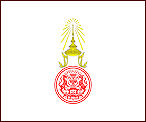
General (ret.) Surayud Chulanont (สุรยุทธ์ จุลานนท์, 1943 - ) ist Ministerpräsident (นายกรัฐมนตรีแห่งราชอาณาจักรไทย - Prime Minister)
Abb.: สุรยุทธ์ จุลานนท์ General (ret.) Surayud Chulanont
[Bildquelle: Wikipedia. -- Public domain]
"General Surayud Chulanont (in Thai: สุรยุทธ จุลานนท์, ausgesprochen: [sǔrájút ʨùlaːnon]; * 28. August 1943 in Bangkok) ist ein ehemaliger thailändischer General und vom 1. Oktober 2006 bis 29. Januar 2008 der nach dem Staatsstreich vom 19. September 2006 von den Militärmachthabern Thailands eingesetzte Interims-Premierminister. Als Sohn des Oberstleutnants der Armee Phayom geboren, besuchte Surayud Eliteschulen wie St. Gabriel und Suan Kulab Wittayalai. Später besuchte er die königlichen Militärakademie Chulachomklao. Er begann im Jahre 1965 offiziell seinen Militärdienst als Unterleutnant. Sein Vater quittierte den Dienst als Surayud noch ein Junge war, und engagierte sich in der Kommunistischen Partei von Thailand (CPT). Als junger Offizier führte Surayud Einheiten der Armee gegen von seinem Vater geführte Zellen der CPT in Nordthailand. Gegen Ende des Vietnamkriegs wurde er Ausbilder an der Schule der Spezialtruppen in der Provinz Lopburi. Anschließend wurde er zum Adjutanten des Armeeoberbefehlshabers General Prem Tinsulanonda befördert. 1992 wurde Surayud Kommandeur der thailändischen Spezialkräfte, später Armeekommandeur. Unter seinem Befehl nahm Thailand erstmals an Missionen der Vereinten Nationen zur Friedenssicherung teil, so zum Beispiel in Osttimor. Bei seinem Vorgänger im Amt des Ministerpräsidenten, Thaksin Shinawatra, fiel Surayud wegen seiner kompromisslosen und wenig wirtschaftsfreundlichen Art der Durchsetzung des UN-Handelsboykotts gegen Burma in Ungnade. Er wurde 2003 entlassen und an seiner Stelle Thaksins Vetter Chaiyasit Shinawatra zum Kommandierenden der Landstreitkräfte ernannt.
Seit 2003 ist Surayud Mitglied des Kronrates des Königs Bhumibol Adulyadej. Surayud und Kronrat Präsident Prem Tinsulanonda spielten eine Schlüsselrolle bei der Beförderung von General Sonthi Boonyaratglin in die Position zum Befehlshaber der Armee. General Sonthi stürzte die Regierung von Thaksin Shinawatra in einem unblutigen Militärputsch am 19 September 2006. Auf Vorschlag der Militärjunta wurde Surayud am 1.Oktober 2006 zum neuen Ministerpräsidenten ernannt. Dieses Amt hatte er inne bis zum 29. Januar 2008, als er durch die Regierung von Samak abgelöst wurde, dessen Partei einen Sieg in freien Wahlen errungen hatte.
Nach anfänglicher Zustimmung verschlechterten sich die Umfragewerte und die allgemeine Meinung wendete sich gegen die Regierung Surayuds, die als eher untätig und ziellos angesehen wurde."
[Quelle: http://de.wikipedia.org/wiki/Surayud_Chulanont. -- Zugriff am 2011-10-06]
2006-10-01

รัฐธรรมนูญแห่งราชอาณาจักรไทย (ฉบับชั่วคราว) พุทธศักราช 2549 - The Constitution of the Kingdom of Thailand (Interim) 2006) (17. Verfassung)
Art: vorläufige Putsch-Verfassung
In Kraft: 2006-10-01 - 2007-08-24
Dauer: 11 Monate 5 Tage
aufgehoben: legal
2006-10-01 - 2008-01-29

60. Kabinett: Surayud (สุรยุทธ)
2006-10-02
The Nation: The persistent myth of the 'good' coup / von Chang Noy [d.h. Baker, Chris <1948 - > und Pasuk Phongpaichit [ผาสุก พงษ์ไพจิตร] <1946 - >]
"The current craze for "combat chic" may not last, and the military officer elite will not fully recover their role as a political caste. But they are back at the centre of Thai politics - with a vengeance. But they and their Bangkok supporters are marooned on an island. On one side there is a sea of international opinion, appalled at how the beacon of democracy in Southeast Asia could have bombed itself back into the political stone age. On the other is the rural mass, probably unsurprised but massively resentful at this treatment of the first political leader they had embraced as their own. Why should they ever again listen to city slickers preaching to them about democracy?
A second myth is right there in the coup-makers' first line of self-justification: that this coup will overcome disunity. Reconciliation does not come out of the barrel of a gun. Unity cannot descend from above. The coup makers themselves are divided; the armed forces are divided; and the country is now divided worse than before. Moreover, things are likely to get worse."
[Quelle: http://www.nationmultimedia.com/2006/10/02/opinion/opinion_30015127.php. -- Zugriff am 2014-10-26. -- Fair use]
2006-10-05
Premiere des Films 13 Beloved (13 เกมสยอง) von Chookiat Sakveerakul (ชูเกียรติ ศักดิ์วีระกุล, 1981 - )
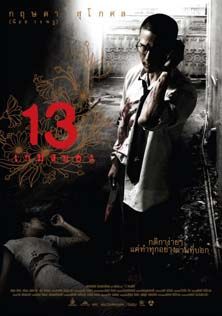
Abb.: Plakat
[Bildquelle: Wikipedia. -- Fair use]
|
13 Beloved (Thai: 13 เกมสยอง or 13 Game Sayong, also 13: Game of Death) is a 2006 Thai horror comedy/psychological thriller film written and directed by Chukiat Sakveerakul (ชูเกียรติ ศักดิ์วีระกุล, 1981 - ) and starring Krissada Sukosol Clapp (กฤษดา สุโกศล แคลปป์, 1970 - ). The story, about a man who is led through progressively challenging, degrading, and dangerous stunts by mysterious callers from an underground reality game show, is adapted from the 13th Quiz Show episode in the My Mania (รวมเรื่องสั้นจิตหลุด) comic-book series by Eakasit Thairaat (เอกสิทธิ์ ไทยรัตน์). 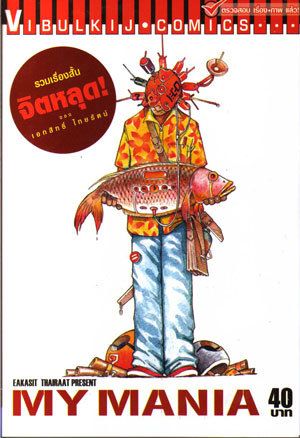 Abb.: Einbandtitel It was the second feature-length film for Chukiat, who previously directed the horror film, Pisaj (คน ผี ปีศาจ, 2004) The film won several awards in Thailand and from film festivals. Remake rights for the film were purchased by The Weinstein Company.
Plot
A Boy Scout is standing at the crosswalk of a busy intersection in Bangkok and sees an elderly woman carrying some bags, struggling to make her way across the street. The woman drops some of her belongings, and as the seconds tick away before the lights will change, the boy runs out to assist the woman. In the confusion, he drops his mobile phone, and leaves it in the street while he helps the woman to safety. Just as the light changes and traffic starts to rush forward, the boy runs out to retrieve his phone, where he is hit by a bus and killed. The scene then shifts to Phuchit Puengnathong (ภูชิต พึ่งนาทอง)[1] (Krissada Sukosol Clapp), a struggling Yamaha Corporation (ヤマハ株式会社) salesman. He arrives at a potential client's school to find that a co-worker from his firm has already made the sale. His girlfriend, Maew, has recently dumped him to become a pop star. He lives alone in a small apartment. The next morning, he finds that his car has been repossessed. He arrives at work and is called into his boss's office, and is forced to resign due to his lack of sales. He goes out to the stairwell to gather his thoughts and have a cigarette. He then discovers he has no more. He has a big stack of overdue bills from credit companies. However, his mobile phone is still working. His mother calls. She needs some money to pay for his younger brother's schooling. Puchit agrees to send her some money. Angrily, he crumples his credit-card statements and bills and throws them to the floor. His phone rings again. The caller says Phuchit has a chance to win 10,000 baht. Phuchit is ready to hang up, thinking the call is cruel joke being played on him by his co-workers or friends. But then the caller tells Phuchit his full name, age, employment status and other details that makes Phuchit stay on the line. To win the 10,000 baht, all he has to do is swat a fly which is at that very moment buzzing around him and has been pestering him the whole time he's been sitting in the stairwell. The caller even says there is a rolled up newspaper nearby. Phutchit grabs the paper and swats the fly. He immediately receives a message that 10,000 baht has been transferred to his bank account. His phone immediately rings again. The caller says Phuchit will win more money if he eats the dead fly. He goes back to his desk, holding the fly while debating whether to eat it. One of his co-workers, a friend, Tong (ตอง ) (Achita Sikamana), comes to see him, just as he pops the fly into his mouth. She is stunned and is not sure what to say to him. Phuchit receives another phone call. The caller explains that if he completes 11 more tasks, he will win 100 million baht. Needing the money, Phuchit reluctantly agrees to the play the game. The caller explains that if he quits the game or anyone discovers that he's playing the game, he'll forfeit all his winnings so far. For the third stunt, he is told he must make some children cry. This act makes Phuchit recall his childhood, in which his father crushed his toys by stomping on them; Phuchit's father, a farang named John Adams (Philip Wilson), had married his Thai mother (Sukulya Kongkawong). Next, Phuchit must steal coins from a beggar. For his fifth stunt, Phuchit is told to go to a fine Chinese restaurant. He is brought a covered plate that contains feces and he is told that he must eat it. This makes Phuchit recall when some bullies tried to make him eat dog feces when he was a child. The stunts grow increasingly degrading, unlawful and deadly. His sixth is to fight with a gang of school-age thugs while riding a public bus in order to get another mobile phone. He must jump down a well and drag up the corpse of a dead man. He has to beat up his ex-girlfriend Maew's new boyfriend with a chair. Next, he must break an elderly woman (the same old woman from the first scene) out of a hospital. The game causes Phuchit to recall his childhood, when he was beaten by his cruel farang father, was taunted by bullies and other bad memories. Meanwhile, Phuchit's friend Tong is concerned about the strange behavior she witnessed earlier in the office and later in the Chinese restaurant, and putting together clues overheard at the police station, she goes to her computer at work and gets on the internet. A computer expert, she manages to hack into a website for a game called 13. However, unbeknownst to her, she is being watched, and unwittingly, she is made part of the game. A police detective, Surachai, also becomes involved, and comes close to catching Phuchit. However, Phuchit evades capture, and a higher-ranking police official orders Surachai to call off the pursuit. Eventually, Tong's life is put at risk. She discovers the place where the game is being run from, and confronts the game's mastermind, a young boy named Kie, who tells Tong he is powerless to stop the game, saying he is "just a component" in the live, underground reality game involves players and viewers that perhaps number in the thousands. Phuchit finds himself confronted by Adams, who is laying strapped to a wheelchair, wearing a straitjacket and appears to be unconscious. To win the 100 million baht, Phuchit must stab Adams with a butcher knife. Phuchit is unable to do this; Adams stabs Phuchit to death, therefore winning his game. Tong screams at Kie, and Kie leaves as his minions hold her. Tong later wakes up on a bus bench.
Cast
[Quelle: http://en.wikipedia.org/wiki/13_Beloved. -- Zugriff am 2013-03-22] |
2006-10-06 + 2006-10-17
Starker Smog in Südthailand infolge von Waldbränden in Indonesien.
Abb.: Waldfeuer in Kalimantan (Indonesien), 2006-10-05"Fires on Borneo Thick smoke hung over the island of Borneo when the Moderate Resolution Imaging Spectroradiometer (MODIS) on NASA’s Terra satellite passed overhead on October 5, 2006. The sensor detected scores of fires (locations marked in red) in the Kalimantan province of Indonesia, and smoke billowed northward over the Malaysian part of the island, as well. The fires occur annually in the dry season (August-October), caused mainly by land-clearing and other agricultural fires. Fires escape control and burn into forests and peat-swamp areas. Fires in peat—thick layers of dead, but un-decayed vegetation—are extremely smoky and difficult to put out. Some of the blazes will only be extinguished when the monsoon rains start in upcoming weeks."
[Quelle: NASA image by Jeff Schmaltz, MODIS Rapid Response Team / Wikipedia. -- Public domain]
Abb.: Lage von Kalimantan
[Bildquelle: CIA. -- Public domain]
2006-10-09

Tod von Dr. Walter Skrobanek (geb. 1941), Südostasien-Beauftragter von Terre des Hommes in Bangkok. Skrobaneks Dissertation ist die bahnbrechende Arbeit:
Skrobanek, Walter <1941 - 2006>: Buddhistische Politik in Thailand : mit besonderer Berücksichtigung des heterodoxen Messianismus. -- Wiesbaden : Steiner, 1976. -- 315 S. -- (Beiträge zur Südasienforschung ; 23). -- ISBN 3-515-02390-9. -- Zugl.: Heidelberg, Univ., Diss., 1972
Abb.: Dr. Walter Skrobanek
[Bildquelle: http://www.asienhaus.de/public/archiv/2006-4-084.pdf. -- Zugriff am 2012-09-24. -- Fair use]
2006-10-12
Premiere des Films The Victim (ผีคนเป็น) von Monthon Arayangkoon (มณฑล อารยางกูร)
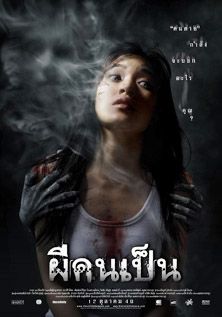
Abb.: Plakat
[Bildquelle: Wikipedia. -- Fair use]
|
"The Victim (Thai: ผีคนเป็น or Phii khon pen) is a 2006 Thai horror-thriller film written and directed by Monthon Arayangkoon Monthon Arayangkoon (มณฑล อารยางกูร). The film stars Pitchannart Sakakorn (พิชญ์นาฎ สาขากร, 1981 - ) as a struggling young actress who takes a job working for the police department, re-enacting crime scenes, but starts to have frightening experiences when she takes on the role of a murdered beauty queen. PlotTing (ติ่ง) is a struggling young actress who one day is noticed by Royal Thai Police (ตำรวจแห่งชาติ) Lieutenant Te, who heads up the crimes re-enactment unit and is always on the look-out for fresh talent. Ting is put to work playing the victim in photo shoots with the hand-cuffed accused killers and rapists at crime scenes. The photos are published in Thai newspapers as a means of the police publicizing that they have closed the case and done their jobs. Ting takes a liking to her job, and is so convincing that even the criminals are moved to remorseful tears. Her popularity soaring, Ting is signed to play the lead in a film based on one of her true-crime re-enactments - the murder of Meen (มีน), a former Miss Thailand whose husband, Dr. Charun (หมอจรัล), is accused of the crime. Ting then starts experiencing some scary visions that lead her believe that Meen's longtime friend, Fai, is responsible. Then it is revealed that the events were actually entirely a film about Meen's murder, and Ting is merely a character being played by another actress named May (เมย์). But while on the set filming the movie, in real life May was really possessed by a spirit that is very obsessed by her. Cast
[Quelle: http://en.wikipedia.org/wiki/The_Victim_%282006_film%29. -- Zugriff am 2013-03-24] |
2006-10-13
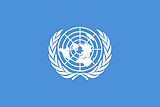
Der Südkoreaner Ban Ki Moon (반기문, 1944 - ) wird Generalsekretär der UNO.
Abb.: Ban Ki Moon (반기문), 2004
[Bildquelle: Robert D. Ward / DoD / Wikimedia. -- Public domain]
2006-10-19
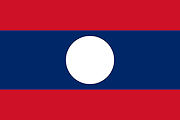
Premiere des Films Lucky Loser (หมากเตะ..โลกตะลึง) von Adisorn Tresirikasem (อดิสรณ์ ตรีสิริเกษม, 1975 - )
Abb.: Anstößiges ursprüngliches Plakat mit laotischen Fußballspielern
Abb.: Bereinigtes endgültiges Plakat[Quelle beider Abb.: Wikipedia. -- Fair use]
"Lucky Loser (Thai: หมากเตะ..โลกตะลึง or Mak Tae Loke Talueng) is a 2006 Thai sports-comedy about a small, fictional Southeast Asian country's bid to play in the World Cup. Initially, the country depicted in the film was Laos, but because of concerns by diplomatic officials that the depiction of Lao players would be seen as offensive to Lao people, the film's release in May 2006 was cancelled. The film's production company, GMM Tai Hub (จีเอ็มเอ็ม ไท หับ), re-edited the film and reshot some scenes to remove any references to Laos.[1] The name of the fictional country is Arvee (ราชรัฐอาวี).[2] Plot
Pong (พงศ์) is one of the greatest football players Thailand has produced and he's a star in England's FA Premier League. But when there's an opening for coach of the Thailand national team, Pong returns in hopes he'll be named for the job. Instead, he is passed over in favor of a Brazilian coach.
His Aunt Ming (เจ๊มิ่ง), a football fan and inveterate gambler, has just won the lottery and had intended on donating her winnings to the Thai team. However, when her nephew is passed over, she decides to give her money to a regional rival, the struggling team in neighboring Arvee. And she's able to convince the team officials to hire her nephew.
So Pong is named coach of the Arvee side. He sets about filling the team's vacancies with players who display various talents. A man who catches watermelons becomes the goalkeeper. The town's aggressive dogcatcher becomes an attacking midfielder. A veteran striker, banned from the game because of his temper, is lured back in.
Coach Pong whips the players into shape. His methods include having the team train inside a freezer container in order to acclimate themselves to playing in colder climates.
For their part, the Arvee players are eager to conform to their ideals of the Western world, dying their hair – including their armpit hair – blond, in an effort to look like the European soccer players they idolize and will possibly play against.
The team at first doesn't follow the coach's strategy, and they lose. Then they listen, and they win. But for their final match, against archrival Thailand, they find their strategies no longer work. So they must revert to their earlier ways and play however they see fit.
At times Coach Pong is conflicted between loyalty to his native country and his desire to see the team he is coaching win.
CastControversy and re-release
- Jakrit Panichpatikam (จักรกฤษณ์ พณิชย์ผาติกรรม, 1973 - ) as Coach Pong (โค้ชพงศ์)
Noi Po-ngam (น้อย โพธิ์งาม) as Aunt Ming (เจ๊มิ่ง)
When the film was due to be released on May 18, 2006, the story was about the national soccer team of Laos. Laotian foreign ministry officials raised concerns that depictions of the Laotian players would be seen as offensive by Lao people and could trigger anti-Thai violence in Laos, similar to the 2003 Phnom Penh riots.
The controversy also came shortly after another Thai film, Ghost Game, sparked outrage among Cambodian officials, because the teen horror movie made light of the atrocities that occurred under the Khmer Rouge and Tuol Sleng Prison.
The movie was completed at a cost of 60 million baht, and for a time it appeared that the film's production company, GMM Tai Hub, would have to permanently shelve the film. But through re-editing and reshooting some scenes to remove any traces of Lao flags and national emblems and creating a fictional country called Arvee, the company was able to release the film. Dialogue was looped so that whenever anyone said "Laos" they instead would say "Arvee."
Remaining prints of the original film were burned at an event witnessed by the film's producers.[3]"
[Quelle: http://en.wikipedia.org/wiki/Lucky_Loser. -- Zugriff am 2013-05-02]
2006-10-27

Die Industrial and Commercial Bank of China (ICBC, 中国工商银行) geht in Hongkong und Shanghai an die Börse. Dies ist mit 147 Mrd. US-$ der größte Börsengang der Finanzgeschichte.
Abb.: Lage von Hong Kong und Shanghai
[Bildquelle: OpenStreetMap. -- Creative Commons Lizenz (Namensnennung, share alike)]
Abb.: ICBC, Beijing
[Bildquelle: RudolfSimon / Wikipedia. -- Creative Commons Lizenz (Namensnennung, share alike)]
2006-11
Thailändische Wissenschaftler entdecken in der Andamanensee ca. 300 km vor der Küste in 2800 m Tiefe vier Schlammvulkane, von denen zwei noch aktiv zu sein scheinen.
Abb.: Lage der Andamanensee (Andaman Sea)
[Bildquelle: OpenStreetMap. -- Creative Commons Lizenz (Namensnennung, share alike)]
2006-11
Gay-Pride-Parade in Bangkok
Abb.: Gay-Pride-Parade, Bangkok, 2006-11
[Bildquelle: Ddalbiez / Wikipedia. -- GNU FDLicense]
2006-11
Erster öffentlicher Auftritt der Popmusik-Gruppe Venus Flytrap (วีนัส ฟลายแทร็บ). Die Gruppe besteht nur aus Kathoey (กะเทย, Transgender).
Abb.: Venus Flytrap (วีนัส ฟลายแทร็บ)
[Bildquelle: th.Wikipedia]
2006-11-01 - 2007-01-31
International Horticulture Exposition for His Majesty the King; Royal Flora Ratchapruek 2006 (มหกรรมพืชสวนโลกเฉลิมพระเกียรติฯ ราชพฤกษ์ 2549) in Chiang Mai (เชียงใหม่).
Beim Eingang steht der Slogan: รักพ่อ พอเพียง "Liebe den Vater (=König) - zufrieden", ein Hinweis auf die Sufficiency Economy Philosophy (เศรษฐกิจพอเพียง) des Königs.
Abb.: ®Logo
[Bildquelle: th.Wikipedia. -- Fair use]
Abb.: Lage der International Horticulture Exposition for His Majesty the King; Royal Flora Ratchapruek 2006 (มหกรรมพืชสวนโลกเฉลิมพระเกียรติฯ ราชพฤกษ์ 2549)
[Bildquelle: OpenStreetMap. -- Creative Commons Lizenz (Namensnennung, share alike)]
Abb.: International Horticulture Exposition for His Majesty the King; Royal Flora Ratchapruek 2006 (มหกรรมพืชสวนโลกเฉลิมพระเกียรติฯ ราชพฤกษ์ 2549), 2007-01-08
[Bildquelle: Binder.donedat. -- http://www.flickr.com/photos/binderdonedat/351503693/. -- Zugriff am 2012-01-09. -- Creative Commons Lizenz (Namensnennung, keine Bearbeitung)]
Abb.: International Horticulture Exposition for His Majesty the King; Royal Flora Ratchapruek 2006 (มหกรรมพืชสวนโลกเฉลิมพระเกียรติฯ ราชพฤกษ์ 2549), 2007-01-08
[Bildquelle: Binder.donedat. -- http://www.flickr.com/photos/binderdonedat/351503109/. -- Zugriff am 2012-01-09. -- Creative Commons Lizenz (Namensnennung, keine Bearbeitung)]
"The Royal Flora Ratchaphruek was a flower festival held 1 November 2006, to 31 January 2007, in the Thai city of Chiang Mai (เชียงใหม่) that drew 3,781,624 visitors. It was one of the grand celebrations being hosted by the Royal Thai Government in honor of King Bhumibol, the world’s longest reigning monarch. The Ratchaphruek (Cassia fistula L.) or Golden Shower Tree is the national flower of Thailand. It is also named "Khun" or "Chaiyaphruek" (ราชพฤกษ์). The reason that the Ratchaphruek was used to symbolize the nation lies in color: its yellow blossoms match the yellow of Buddhism; furthermore, the Thai people regard yellow as the color of the King as well. Moreover, all golden shower trees bloom at the same time; this unity in flowering was felt to reflect the unity and identity of Thais.
The event was located in 80 hectares of land at the Royal Agricultural Research Center in Mae Hia sub-district, Mueang district, Chiang Mai Province in northern Thailand. The 92 days of the expo featured 30 international gardens reflecting nations such as Japan, South Korea, Belgium, Netherlands, South Africa, and Canada; more than 2.5 million trees of 2,200 species of tropical plants and flowers are presented to the world in this exhibition. The AIPH, the Association of International Horticultural Producers, gave this expo A1 status, its highest level; such an exhibition occurs only once a year throughout the world. In addition, a host country can only hold one such exhibition once a decade.
The festival included many highlights to attract tourists:
- Gardens for the king There were two features in this zone: one was International gardens, which were presented by 30 participating nations and covered 21,000 square meters; the other was Corporate gardens, which covered 27,475 square meters, and were presented by both Thai state enterprises, and domestic and international major corporations.
- Ho Kham Royal Pavilion This building featured Lanna architecture, the architectural style of northern Thailand; inside, visitors saw pictures of King Bhumibol's works and his dedication.
- Thai Tropical Garden The enormous 100,000-square-meter garden showcased the diversity of tropical horticulture: fruit varieties, plants, flowers, herbs, and rare plants.
- Expo Plaza This was the focus of the exposition's fun-filled activities, amenities, and services. Visitors were able to purchase products from the Royal Projects and authentic local products from Chiangmai such as handicrafts, paper umbrellas, and souvenirs.
- Cultural shows A total of 45 cultural shows from various regions of Thailand were performed here, including traditional music and dance. In addition, cultural performances from other nations were presented in this place.
The Thai government had expected an average of 20,000 visitors per day, with over 100,000 visitors on a crowded day, and 3 million visitors in total to attend the Royal Flora Ratchaphruek 2006. At the exposition's conclusion, organizers claimed that the exposition had injected 27 billion baht into the regional economy.
The Thai government has proposed transforming the site of the exposition into a permanent training center. Despite some complaints of corruption and substandard facilities, organizers believed the exposition achieved its goals of promoting tourism and developing Thai horticultural industries.
The park was open to the public in 2008 with many of the past highlights still very much in evidence, including the international exhibits. It is thought that it will remain to stay open as a valued addition to things to do in Chiang Mai. Currently, admission is free, though this will most likely change. The park receives around 500 visitors a day at the moment, mainly Thai."
[Quelle: http://en.wikipedia.org/wiki/Royal_Flora_Ratchaphruek. -- Zugriff am 2012-01-09]"To create Ratchaphruek, the ministry invited investors from some of the largest companies operating in Thailand, including the Boonrawd Beverage Company [บริษัท บุญรอดบริวเวอรี่ จำกัด] (Singha Beer [สิงห์]), the Thai power company [Electricity Generating Authority of Thailand / EGAT / การไฟฟ้าฝ่ายผลิตแห่งประเทศไทย], Toyota, and others, as well as several nations—Iran, Kenya, Japan, the Netherlands, and Turkey, among others—to build gardens, as the department invited, "to express respect for HM the King or highlight historic links between His Majesty’s royal activities [between these activities and just what remained unspecified]" (Royal Flora 2007). For Thai audiences, the international pavilions reinforced the idea (continually reiterated in royal-related news) that the king was revered internationally as well as in Thailand: these pavilions were smaller and subordinate to the royal one, and each was required to show its relationship to the king's activities. Here the king was presented as a source of knowledge and merit extending to a worldwide network." [Quelle: Johnson, Andrew Alan: Ghosts of the new city : spirits, urbanity, and the ruins of progress in Chiang Mai. -- Honolulu : University of Hawaiʻi Press, 2014. -- 190 S. : Ill. ; 23 cm. -- ISBN 978-0-8248-3971-0. -- S. 116f.]
A. A. Johnson beschreibt den Königlichen Pavillon (หอคำหลวง):
"The ho kham [หอคำ ]was a space devoted to the current monarch—indeed, while the entire exhibition was space devoted to the monarchy, the ho kham was the part where the monarch’s presence and barami [บารมี - höchste Tugenden] were most manifest. As such, this was the centerpiece for visitors: whereas the gardens, with their open plazas and bright sun, were only moderately crowded even during the height of the exhibition, and the country pavilions remained largely ignored, the ho kham was, for most, according to tourist surveys filled out by visitors leaving the park, the sole stop they made in the place. It was not only the symbolic heart of the exhibition, for the majority of visitors it was the exhibition itself. I made this stop in a group of Thai visitors on each trip. In the pavilion, the first floors were devoted to the king’s royal projects and to art devoted to the king. The former included irrigation projects, agricultural projects, hill-tribe development projects, and the king’s SEP [Sufficiency Economy Philosophy - เศรษฐกิจพอเพียง] theory. It was a simplifying and largely imagined picture of rural life. For instance, one artist, having painted a portrait of a hill-tribe woman harvesting coffee, claimed that it was
"[p]resented from the angle of Thai hill type people from the far areas, who live in peace, simplicity and happiness by following the advice of the King’s speech concerning the sufficiency economy, "
implying that the tribes’ poverty was a result of a conscious choice to abstain, and that their frugality was a demonstration of their royal piety. Outside the gallery, in the hall devoted to the sufficiency economy, posters explained not only the concept but also the various applications of the theory to different professions. A poster detailed the application of SEP to teachers, academics, business people, farmers, and so forth, each exhorting the individual not to reach beyond his or her means, and to realize his or her role in society.
But the center of the exhibition was not this display of royal development projects. The ho kham was a shrine, not a museum. Above the SEP exhibit was the teak structure of the ho kham, its walls lined with paintings evoking a Buddhist temple, and at its center, a tree fashioned from various precious metals, designed after the gold and silver trees presented to Siamese kings as tribute during the feudal period. This particular one had leaves of copper, gold, and platinum, representing the progression of royal thinking during the sixty years of Bhumibol’s reign.
Abb.: "Baum" im Royal Pavillon [หอคำ], 2012
[Bildquelle: Qsimple, Memories For The Future Photography. -- https://www.flickr.com/photos/qsimple/8351117412. -- Zugriff am 2015-04-18. -- Creative Commons Lizenz (Namensnennung, keine kommerzielle Nutzung, share alike)]This tree was at the center of Ratchaphruek—the primary gift to the monarchy from the Ministry of Agriculture. Observation of and controls over visitors were at their height here, at the center of watthanatham' s [วัฒนธรรม]disciplining gaze. After moving around in a long line to the entrance and removing our shoes, we climbed the stairs into the main hall. Inside, a red carpet lined the walls, and staff with megaphones chastised anyone who stepped too close to the carpet."
[Q"uelel: Johnson, Andrew Alan: Ghosts of the new city : spirits, urbanity, and the ruins of progress in Chiang Mai. -- Honolulu : University of Hawaiʻi Press, 2014. -- 190 S. : Ill. ; 23 cm. -- ISBN 978-0-8248-3971-0. -- S. 122. -- Fair use]
2006-11-01/03
In Wien (Österreich) Gründung des Internationale Gewerkschaftsbunds (IGB) ( International Trade Union Confederation - ITUC). Er vertritt 305 Gewerkschaften in 151 Ländern. Er setzt sich zusammen aus den früheren Mitgliedsorganisationen des Internationalen Bundes Freier Gewerkschaften (IBFG) und des Weltverbandes der Arbeitnehmer (WVA) sowie aus Gewerkschaftsorganisationen, die zuvor keinem Weltverband angeschlossen waren.
Abb.: ®Logo
Abb.: Lage von Wien (Österreich)
[Bildquelle: OpenStreetMap. -- Creative Commons Lizenz (Namensnennung, share alike)]
2006-11-02
Ministerpräsident Surayud entschuldigt sich für die Vorfälle in Tak Bai (ตากใบ), Provinz Narathiwat (นราธิวาส) am 2004-10-28: damals waren beim Abtransport von durch die Armee festgenommenen Muslimen 78 Personen erstickt.
Abb.: Lage von Tak Bai (ตากใบ)
[Bildquelle: OpenStreetMap. -- Creative Commons Lizenz (Namensnennung, share alike)]
2006-11-02
Premiere des Films The Unseeable (เปนชู้กับผี) von Wisit Sasanatieng (วิศิษฏ์ ศาสนเที่ยง, 1963 - )
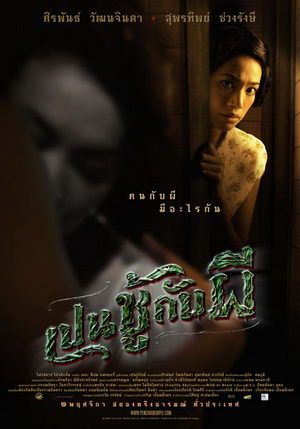
Abb.: Plakat
[Bildquelle: Wikipedia. -- Fair use]
|
"The Unseeable (Thai: เปนชู้กับผี or Pen Choo Kub Pee; RTGS: Pen Chu Kap Phi) is a 2006 Thai horror film directed by Wisit Sasanatieng (วิศิษฏ์ ศาสนเที่ยง, 1963 - ). The first film of another writer's screenplay by the director, the writer is Kongkiat Khomsiri (ก้องเกียรติ โขมศิริ, 1975 - ), one of the "Ronin Team" credited with directing the 2005 Thai horror film Art of the Devil 2 (ลองของ). PlotSet in 1934 Siam, the story involves a young pregnant woman named Nualjan (นวลจัน) who's searching for her missing husband. She comes to stay in the spooky rural mansion of a widow, Runjuan (รัญจวน). The overgrown property is managed by the stern caretaker Somchit (สมจิต) and inhabited by a number of other people, including another young woman, Choy, who becomes Nualjin's friend, as well as an old woman, a little girl and a man who is seen at the back of the property, digging a hole. At the near end of the movie she discovers that all people in the mansion are dead. And she also is one of them. Cast
[Quelle: http://en.wikipedia.org/wiki/The_Unseeable. -- Zugriff am 2013-03-24] |
2006-11-06

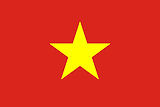
Vietnam wird Mitglied der Welthandelsorganisation (WTO).
2006-11-08
Tarisa Watanagase (ธาริษา วัฒนเกส, 1949 - ) wird Leiterin der Zentralbank (Bank of Thailand - ธนาคารแห่งประเทศไทย). Sie ist die erste Frau auf diesem Posten.
Abb.: Tarisa Watanagase (ธาริษา วัฒนเกส), 2010
[Bildquelle: Photographer attached to the Prime Minister of the Kingdom of Thailand : Peerapat Wimolrungkarat / พีรพัฒน์ วิมลรังครัตน์. -- http://www.flickr.com/photos/thaigov/4766929298/. -- Zugriff am 2012-06-14. -- Creative Commons Lizenz (Namensnennung)]
"Tarisa Watanagase (Thai: ธาริษา วัฒนเกส, Aussprache: [tʰāːrísǎː wáttʰánákèːt] * 30. November 1949), ist eine thailändische Volkswirtin Leben und Karriere
Tarisa war vom 8. November 2006 bis 30. September 2010 Leiterin der Zentralbank Thailands. Sie war Nachfolgerin von Pridiyathorn Devakula (ปรีดิยาธร เทวกุล, 1947 - ), nachdem dieser Finanzminister der Übergangsregierung wurde. Zuvor war sie die stellvertretende Leiterin der Zentralbank. Sie war die erste Frau an der Spitze der Zentralbank in deren 64-jährigen Geschichte.
Tarisa arbeitet seit 1975 für die Zentralbank, deren stellvertretende Chefin sie 1992 wurde. Sie studierte an der japanischen Keiō-Universität (慶應義塾大学) und in den USA, sie promovierte an der Washington University in Wirtschaft. Von 1988 bis 1990 war sie für den Internationalen Währungsfonds tätig.
Tarisas Geldpolitik verfolgte eine protektionistischen Ansatz. So ist sie verantwortlich für die 2006 eingeführte Vorschrift, dass ausländische Anleger 30 % ihres in Thailand eingesetzten Kapitals zinslos bei der Zentralbank hinterlegen müssen. Damit soll ein zu starker Baht verhindert werden, der für die exportabhängige Industrie Thailands schädlich wäre.
Im Jahr 2007 erhielt sie die Ehrendoktorwürde der Keiō-Universität.[1]
Sie ist verheiratet und hat eine Tochter."
[Quelle: http://de.wikipedia.org/wiki/Tarisa_Watanagase. -- Zugriff am 2012-06-14]
2006-11-08
Es erscheint:
Thongchai Winichakul [ธงชัย วินิจจะกูล]: สัมฤทธิผลนิยมของปัญญาชนไทยกับการรัฐประหาร [Pragmatism of Thai intellectuals and the coup]. -- http://prachatai.com/journal/2006/11/10415. -- Zugriff am 2016-11-10
2006-11-10

Es erscheint:
Nakarin Shinworakomol ; Charoon Thongnual [จรูญ ทองนวล]: Exodus of Buddhists. -- In: The Nation <Bangkok>. -- 2006-11-10
"Fleeing villagers seek refuge in wat [วัด] of nearby district, fearing attacks by militants
Abb.: Lage von Than To [ธารโต] and Bannang Sata [บันนังสตา]
[Bildquelle: OpenStreetMap. -- Creative Commons Lizenz (Namensnennung, share alike)]Nearly 100 Buddhists from three villages in Yala's [ยะลา] Than To [ธารโต] and Bannang Sata [บันนังสตา] districts have fled their homes and sought refuge at a temple in a nearby district amid growing fears of more insurgent violence, officials said. They left late on Wednesday evening amid rumours that suspected militants were planning to attack their homes, said Phongsak Ying-chomcharoen, chairman of Yala municipality. Fear and suspicion in the two districts are rife after militants killed two locals, Boon Iamsa-ard, 68, and his daughter Aree Iamnirand, 28, on November 5, before burning down their house. Aree's husband, Thongchai, was unable to hold back his tears as he gave his account to provincial officers about the November 5 incident that ended the lives of his wife and father-in-law. The villagers are currently staying in the compound of Nirotsangkha-ram Temple in Yala's Muang district. Most of them came with whatever they could carry and are currently dependent on the generosity of the temple for food. The Office of HM the Queen dispatched personnel and sacks of relief supplies to help ease the burden of the families. The villagers appeared uncertain as to what the future holds as they stared aimlessly around the vast temple grounds, which they said will be their home for the time being. Violence in the three southernmost provinces have displaced a number of Buddhist residents over the past three years but the Wednesday exodus was the first of its kind in which an entire community packed its belongings and fled.
Abb.: Lage von Narathiwat [นราธิวาส]
[Bildquelle: OpenStreetMap. -- Creative Commons Lizenz (Namensnennung, share alike)]In September 2005, at least 131 Muslim families from Narathiwat [นราธิวาส] had also fled to northern Malaysia where they are currently residing in a government compound. The incident led to a diplomatic fallout between Thailand and Malaysia, especially after the latter permitted the UN refugee agency to interview the displaced villagers. Local residents said the violence has restricted their travel and activities, and taken a tremendous toll on their livelihood. Wednesday night's exodus marks a setback for the government's policy of reconciliation as none of Prime Minister Surayud Chulanont's goodwill gestures have been reciprocated by the militants who have been accused by authorities of being behind the daily violence in the three Malay-speaking southernmost provinces. Attacks on soldiers, as well as civilian targets, continue unabated and the government is hard pressed to come up with a quick solution for a problem that many analysts say could take a generation to resolve. "
[Quelle: http://www.nationmultimedia.com/homeExodus-of-Buddhists-30018601.html. -- Zugriff am 2016-03-16. -- Fair use]
2006-11-11

Die buddhistischen Mönche in der Provinz Narathiwat (นราธิวาส) gehen aus Furch vor Bombenattacken auf sie und ihre militärischen Sicherheitsbegleiter nicht mehr auf Almosengang.
Abb.: Lage der Provinz Narathiwat (นราธิวาส)
[Bildquelle: OpenStreetMap. -- Creative Commons Lizenz (Namensnennung, share alike)]
2006-11-11

Tod des Thaiisten David K. Wyatt (geb. 1937).
Abb.: David K. Wyatt
[Bildquelle: University of Ohio / Wikipedia. -- Public domain]
"David K. Wyatt (* 21. September 1937 in Fitchburg (Massachusetts); † 15. November 2006 in Ithaca (New York)) war ein US-amerikanischer Historiker, der sich mit Südostasien und insbesondere mit Thailand beschäftigte. Er gilt als einer der bedeutendsten Vertreter der Thaiistik. Leben
Wyatt wuchs in Iowa auf und studierte an der Harvard-Universität Philosophie, bis er 1959 den Bachelor-Abschluss erhielt. Anschließend studierte er an der Universität Boston bis zum Master-Abschluss 1960. Schließlich promovierte er 1966 von der Cornell-Universität im Fach Geschichte.
Schon vor seiner Graduierung erhielt Wyatt einen Lehrauftrag an der School of Oriental and African Studies an der Universität London, wo er bis 1968 unterrichtete. Nach einem Jahr an der Universität Michigan kehrte er an die Cornell-Universität zurück, wo er eine Zeit lang als Vorsitzender des Departments für Geschichte fungierte. Er blieb an der Cornell-Universität bis zu seiner Emeritierung im Jahr 2002.
2005 verkaufte Wyatt seine etwa 15.000 Bände umfassende Forschungsbibliothek an die Southeast Asia Collection der Universität Ohio.
David K. Wyatt starb am 15. November 2006 in der Hospicare Residence in Ithaca, New York.
Veröffentlichungen
- The Politics of Reform in Thailand. 1969
- Thailand : a short history. 1984. ISBN 978-0-300-08475-7.
- Siam in Mind. 2002. ISBN 978-974-7551-72-3.
Wyatt übersetzte auch mehrere Thai-Chroniken."
[Quelle: http://de.wikipedia.org/wiki/David_K._Wyatt. -- Zugriff am 2012-06-18]
2006-11-13

Abb.: Ihre Majestät, Königin Sirikit (สมเด็จพระนางเจ้าสิริกิติ์ พระบรมราชินีนาถ) auf Staatsbesuch in Moskau, 2007
[Bildquelle: Presidential Press and Information Office / Wikimedia. -- Creative Commons Lizenz (Namensnennung)]Ihre Majestät, die Königin, zeigt sich empört über sog. Coyote-Tänzerinnen (โคโยตี้). Diese "sexuell aufreizende" Tanzform "spärlich bekleideter Frauen" ist durch den amerikanischen Film "Coyote Ugly" (2000) populär geworden. Das Kulturministerium will strenge Kontrollen einführen.
Abb.: Coyote-Tänzerin, New York, USA (kein thailändisches Bild verwertbar)
[Bildquelle: Javier Hernández. -- http://www.flickr.com/photos/jhernandez/452587592/. -- Zugriff am 2012-01-09. -- Creative Commons Lizenz (Namensnennung, keine kommerzielle Nutzung)]
2006-11-14

Es erscheint:
Crown Prince blasts bandits. -- In: The Nation. -- 2006-11-14
Abb.: Lage von Yala [ยะลา]
[Bildquelle: OpenStreetMap. -- Creative Commons Lizenz (Namensnennung, share alike)]
"Condemns attacks on Buddhist villages in Yala; Palace sympathises with their suffering
His Royal Highness Crown Prince Maha Vajiralongkorn [สมเด็จพระบรมโอรสาธิราช เจ้าฟ้ามหาวชิราลงกรณ สยามมกุฎราชกุมาร, 1952 - ] yesterday lambasted "people who act like bandits and are a threat to society" for having caused "serious suffering" to Buddhist villagers in the deep South.He also called for an urgent solution to the problem.
It was the first public reaction from the Palace since insurgents launched violent attacks on Buddhist villages in Yala [ยะลา] recently.
"I sympathise with you for your frustrations. The entire nation and Their Majesties the King and Queen have concern and sympathy for you. Your sufferings are serious," he said.
"It's really unacceptable for a group of people who act like bandits and are a threat to society. They also fail to respect human rights," he said. "These events need to be solved urgently."
The Prince was speaking to a group of 100 Buddhists who had fled their villages in Yala to take refuge at a local temple.
He was on a visit to the Muslim-majority border province and was accompanied by Her Royal Highness Princess Srirasmi [พระเจ้าวรวงศ์เธอ พระองค์เจ้าศรีรัศมิ์ พระวรชายาฯ, 1971 - ].
The Prince asked the affected villagers not to give in to the violent tactics used by the insurgents. He said they should return to their homes after things return to normal.
"If you leave your houses and farms, you will need to start all over again. That way, you will allow bad people or enemies to make use of your properties. They will be able to make money from your properties and, as a result, they could do more bad acts and become bolder in doing bad things," the Prince said.
"You'd better think about how to make your neighbourhood safe," he added.
One villager said that attacks, often with heavy weapons, had taken place in his village over the past three years.
"Southerners have been killed every day. We can't bear it any more. We won't return there [to their villages] again," he said.
The Prince was heard consoling the man and told him that he did not have to think about returning home at this time.
"You don't have to go back to your home now.
"What you should think about is whether there are any [safety] flaws in your homes and plantations and what you can do about it," he said.
[Quelle: http://www.nationmultimedia.com/2006/11/14/headlines/headlines_30018899.php. -- Zugriff am 2016-03-16. -- Fair use]
2006-11-14
Laut Manager Daily liegen kommen Thais an dritter Stelle (nach USA und China) in der Nutzung der Sexangebote der Video-Chat-Community Camfrog.
2006-11-16

Premiere der Oper Ayodhya (อโยธยา) von Somtow Sucharitkul (สมเถา สุจริตกุล, 1952 - ).
Künstlerlink auf Spotify:
URI: spotify:artist:4Soo1m7QRDh8vQvTd1mIeF
URL: https://open.spotify.com/artist/4Soo1m7QRDh8vQvTd1mIeF
Abb.: Michael Chance als Ganesha, 2006-12-06
[Bildquelle: Wikipedia. -- Public domain]
"Ayodhya is an opera by Somtow Sucharitkul. It premiered on November 16, 2006 at the Thailand Cultural Center in Bangkok, in a production directed by Dutch director Hans Nieuwenhuis and featuring Michael Chance as Ganesha, Nancy Yuen as Sita, Charles Hens as Rama, and John Ames as Ravan. The libretto is a distillation of the entire Ramayana epic into a single evening. The opera was composed as a special tribute to the King of Thailand as part of the nationwide celebration of the King's Sixtieth Regnal Year. However, the opening was marred by a censorship debate which was widely discussed in the international press."
[Quelle: http://en.wikipedia.org/wiki/Ayodhya_%28opera%29. -- Zugriff am 2012-06-06]
Somtow Sucharitkul (สมเถา สุจริตกุล, 1952 - ) äußert sich gegenüber The Nation so:
"Why artistic freedom matters A few weeks ago, I was asked to be the keynote speaker at the annual SEAWrite Awards Ceremony at the Oriental Hotel. The reason I was asked was that the advertised speaker, Nobel Prize laureate Wole Soyinka [1934 - ], had pulled out at the last minute to protest the coup, saying that he wouldn't speak in a country that was no longer free.
In my speech, I vigorously defended our country and berated Mr Soyinka for boycotting the awards to protect my freedom. I proudly insisted that having returned to the country of my birth after having spent some 50 years abroad, I had never felt more free. I spoke about my new opera, "Ayodhya", which opens today and which I've created as a personal tribute to His Majesty the King and to the country from which I've drawn much inspiration over the last 50 years. I talked about how artists must dare to show the truth in people's hearts, and I exhorted the winners of the SEAWrite Award never to lose heart and always to protect and respect each other's freedom.This week, however, my feelings of artistic freedom received a bit of a jolt when I was visited by some officials of the Ministry of Culture, who wanted me to change the libretto of my opera (which they had not read) and intimated that they might want to censor it. The request came not in some brutal, repressive way as might happen in a Stalinist country. It was very polite and conciliatory. It was something like, "Please, ajarn, couldn't the death of Thotsakan [ทศกัณฐ์ = Ravana / रावण] happen off-stage? It's a tradition in the khon [โขน] not to show this scene. It's never been shown in 500 years. We're worried it might bring bad luck."
[...]
I had a long talk with the officials from the ministry. It was a very emotional one because this aria is the heart of the opera, and to change the music would be an artistic outrage. At the same time, whether Thotsakan dies on stage or not is a matter of stagecraft, not of music. In opera, truth is in the music, not in what is said or shown. I cannot now recall whether, in the khon I saw as a child, the death was onstage or off. But what my eyes did not see, my heart saw.
I believe I have understood their point of view very well. I'm not an insensitive foreigner hell-bent on destroying cultural icons. I want to say that with this opera I have made the Thai nation a gift of my innermost emotions and that it is an opera about the things we as human beings care most about: love, betrayal, jealousy and, ultimately, redemption.
I do want to say that I have been forced to sign a document giving the officials of the cultural centre the right to immediately shut down the opera in mid-performance if, in their sole opinion, a breach of "tradition" occurs. The world is watching Thailand very carefully right now. Most of my colleagues and friends agree that the foreign press has been unfair in its reaction to recent political events. But of course, our country will not look good in the world's eye if it starts to think we are a country of artistic repression.
I would like to encourage all of you to come and judge for yourselves. I have in fact agreed to show on stage only that which some arbitrary person has defined as being within the decent boundaries of tradition. The most important question is this: What do your eyes see and what does your heart see? Only my audience can tell me whether I have compromised my integrity or not.
I will tell you why I am glad to be home. I am grateful, and I say it without irony. I am grateful even for this. I am flattered that people think what I have to say is meaningful enough, and important enough, that it might be worth trying to silence. If my work stirs people, if it causes them to genuinely reflect and change, then and only then is it really art.
SP Somtow"
[Quelle: http://www.nationmultimedia.com/2006/11/16/opinion/opinion_30019095.php. -- Zugriff am 2016-01-17. -- Fair use]
2006-11-23
Premiere des Films Khao Chon Kai (เขาชนไก่) von Withid Kamsrakeaw (วิทิต คำสระแก้ว)
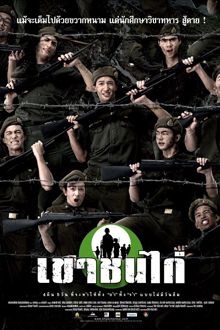
Abb.: Plakat
[Bildquelle. Wikipedia. -- Fair use]
|
"Khao Chon Kai (Thai: เขาชนไก่) is a 2006 Thai teen comedy drama film directed by Withid Kamsrakeaw (วิทิต คำสระแก้ว). PlotKhao Chon Kai (เขาชนไก่) is a military training camp where Thai boys will face the challenge of the training during their senior year of high school. A group of boys meet at the camp and begin their training together, encountering many obstacles during the rigorous training regimines. Despite the hardships, they discover that friendship and true friends are the most precious things they've found in Khao Chon Kai.
[Quelle: http://en.wikipedia.org/wiki/Khao_Chon_Kai. -- Zugriff am 2013-03-24] |
2006-11-30
Premiere des Films Legend of Sudsakorn (สุดสาคร) von Kaisorn Buranasing (ไกรสร บูรณ์สิงห์)
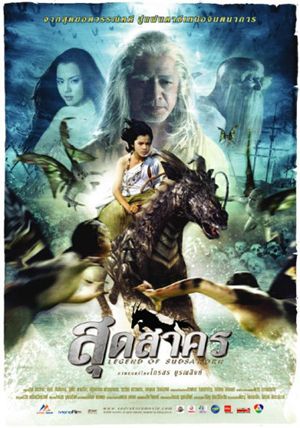
Abb.: Plakat
[Bildquelle: Wikipedia. -- fair use]
|
Legend of Sudsakorn (Thai: สุดสาคร) is a 2006 Thai fantasy film. It is based on a story from Phra Aphai Mani (พระอภัยมณี), an epic poem by Sunthorn Phu (สุนทรภู่, 1785 - 1855). Charlie Trairat (ชาลี ไตรรัตน์, 1993 - ), the young male lead from Fan Chan, portrays the title character, a boy who is the son of a mermaid who is sent on a magical quest to find his father, a prince. It is a mix of live action and computer-generated imagery. The story was previously adapted in the 1979 Thai animated feature, The Adventure of Sudsakorn. Cast
[Quelle: http://en.wikipedia.org/wiki/Legend_of_Sudsakorn. -- Zugriff am 2013-03-24] |
2006-12

Zum Beispiel Sklavenarbeit von Flüchtlingskindern aus Myanmar:
"Ann is a 15-year old Burmese girl working at a sewing factory in Mae Sot (แม่สอด), northern Thailand. She works more than 12. hours per day, sever, days a week, and earns as little as 200 Thai baht (US$5) per week. She is compelled to work unpaid overtime. Once when she asked her supervisor not to have to work overtime, she was punished by being forced to use a sewing machine known to have wiring problems which consequently gave her repeated, painful electrical shocks." [Quelle: Anders Lisborg und Paul Buckley: Child labour in Thailand. -- Zitiert in: Siroj Sorajjakool <1959 - >: Human trafficking in Thailand : current issues, trends, and the role of the Thai government. -- Chiang Mai : Silkworm, 2013. -- 241 S. : 21 cm. -- ISBN 978-616-215-060-9. -- S. 103.]
Abb.: Lage von Mae Sot (แม่สอด)
[Bildquelle: CIA. -- Public domain]
2006-12
Ein Erdbeben vor Hengchun (恆春鎮) an der Küste Taiwans (臺灣) zerstört Internetverbindungen in ganz Asien, auch viele Thailands.
Abb.: Lage von Hengchun (恆春鎮)
[Bildquelle: OpenStreetMap. -- Creative Commons Lizenz (Namensnennung, share alike)]
2006-12
Es erscheint das Album (3 CDs):ธงไชย "เบิร์ด" แมคอินไตย์ [Thongchai "Bird" McIntyre] <1958 - >: เบิร์ดเปิดฟลอร์ [Bird Perd Floor]
Künstlerlink auf Spotify:
URI: spotify:artist:0fGHTj05vtJqkbogP7tW1x
URL: https://open.spotify.com/artist/0fGHTj05vtJqkbogP7tW1x
Abb.: CD-Hülle
[Fair use]
2006-12-01
Start der Online-Enzyklopädie Panyathai (คลังปัญญาไทย)

Abb.: ®Logo
|
"Panyathai (คลังปัญญาไทย) is a Thai online encyclopedia started on 1 December 2006 with 80 articles,[1] mainly in Thai. Established in honor of King Bhumibol Adulyadej, the site plan is to have at least 80,000 articles by 5 December 2007, the king's 80th birthday. There is some English content, mostly providing information about the Royal Projects. The articles come from two different sources:
All the content will be copyrighted, unlike the other Web-based encyclopedias. The project claims itself as a wiki and states that users can make changes to the articles but there is no such functionality since its launch. The website allows creation of articles and adding comments to the already-created articles. However, registration is required. The website uses Drupal as the content management system and MediaWiki for the Wiki part. The project is controlled by the Thai Webmaster Association with support from the Ministry of Education and the Thai Health Promotion Foundation." [Quelle: http://en.wikipedia.org/wiki/Panyathai. -- Zugriff am 2013-04-20] |
2006-12-04
Premiere des Films The Possible (เก๋า..เก๋า) von Witthaya Thongyooyong (วิทยา ทองอยู่ยง, 1973 - )
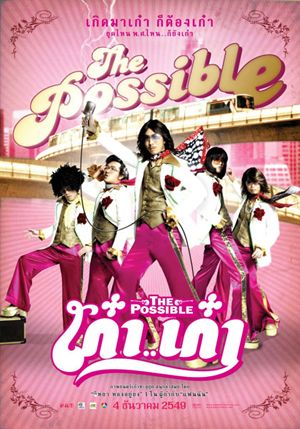
Abb.: Plakat
[Bildquelle: Wikipedia. -- Fair use]
|
"The Possible (Thai: เก๋า..เก๋า, Kao ... Kao) is a 2006 Thai musical-comedy film. It stars Thai rapper Joey Boy (Apisit Opsasaimlikit - อภิสิทธิ์ โอภาสเอี่ยมลิขิต, 1975 - ) as the leader of a 1970s rock group (Thai string combo) that finds themselves transported by a time machine-microphone to the present day. The band, The Possible, is patterned loosely after an actual Thai band from the 1970s, The Impossibles (ดิ อิมพอสซิเบิ้ล). The film is directed by Witthaya Thongyooyong (วิทยา ทองอยู่ยง, 1973 - ), one of the six directors of the hit 2003 Thai film, Fan Chan (แฟนฉัน). PlotIn 1969 in Thailand, The Possible are the most popular band. But the fame has caused the band members to have big egos. They ignore their fans. The lead singer, Toi (ต๋อย) , is cavorting with a farang (ฝรั่ง) woman, and is caught by his Thai girlfriend, Straw (สตรอเบอร์รี่). One day, on the way to a concert, Toi finds a present that has been given to the band by a fan. It is a pink microphone called a "Hit Tester". He tries it out at first at another show being given by an upstart rival band, The Impossibles, singing vulgar lyrics as they play one of their hit songs and disrupting the gig. Toi then uses the mic at The Possible's own concert. During the song, there is much confusion, because the eight-piece band's trumpeter is drunk and falls off the riser. As the trombonist and saxophonist step offstage to retrieve their bandmate, there is a flash of light and the remaining five members of the band disappear. They then reappear in what appears to be the same auditorium, only now they are blocking the view of a pornographic film and are booed offstage by the male audience. The band then walks out onto the street and find that Bangkok looks a lot different than it did when the concert started, the most noticeable difference is the skytrain (รถไฟฟ้าบีทีเอส) and increased noise pollution and traffic. Slowly, it dawns on them that they have travelled in time 37 years in the future to 2006. The encounter more difficulties when they try to pay for some noodles with their 1969 currency. After fighting with the noodle stall staff, they are thrown in jail. By chance, a middle-aged man (named Ooh) is at the police station paying a traffic ticket when he notices the band. He can't believe his eyes. They look just like his favorite band from his youth. He was their biggest fan. After he gets over his initial shock, he decides to help the band adapt to their new era. The band decides it must play some concerts and try to recreate the energy that caused the time travel. However, their old-style of music no longer attracts crowds, and they don't have their horn section. They try to audition some new horn players, but eventually decide to look up their old members. The trombonist is a Buddhist monk, and the saxophonist is a doddering, gray-haired man. The trumpet player died of alcoholism, leaving his daughter, Nu Malee, an orphan. The band takes pity on the girl and allows her to join. The next hurdle is to get the band a concert. After trying unsuccessfully to land a record deal, they put eventually book a show back at the porn cinema. Much to their dismay, they find that the concert was promoted with the free giveaway of a pirated pornographic VCD and is to be shut down by the police. However, Setha Sirichaya, the lead singer of The Possible's old rivals, The Impossibles (which went on to become the top band in Thailand after The Possible's mysterious disappearance), intervenes and whips up enthusiasm among the crowd of men who wanted to see a pornographic film. With the energy ample, the pink microphone is able to function and transport The Possible back to 1969, where, having seen the error of their ways, the band members reform their personal habits and embark on a career that concentrates on their talents, rather than fame, which will ensure their place as one of the legends of the Thai rock music scene. Cast
Original Motion Picture Soundtrack: The Possible by Joey Boy (โจอี้ บอย, 1975 -) was released by GMM Grammy in December 2006 to accompany the film. Many of the tracks are cover versions of Western pop songs, except with Thai lyrics that are specific to the characters and situations depicted in the film. The album cover features members of the fictional band in the same poses that the 1970s Thai band, The Impossibles, used for a publicity photo and album cover." [Quelle: http://en.wikipedia.org/wiki/The_Possible. -- Zugriff am 2013-03-24] |
2006-12-05


Ein Schweizer Staatsbürger wird wegen lèse-majesté (Majestätsbeleidigung) verhaftet und später zu 20 Jahren Gefängnis verurteilt, weil er im Suff ein Bildnis des Königs mit schwarzer Farbe verunstaltet hat. Im April 2007 wird er vom König amnestiert und aus Thailand ausgeschafft.
2006-12-05

Geburtstag des Königs. Der König greift in seiner Geburtstagsrede Ministerpräsident Thaksin an:
"Today, I intend to talk about catastrophe, not development. I think we all know that our country is not developing, but everything seems to be on a decline. The prime minister has a long face now after I mentioned catastrophe, but I'm telling the truth, because whatever we do, there seems to be big problems. The prime minister may appear to be happy, but deep down inside he's definitely not. He might have no idea what to do because there seems to be no progress with anything. So many people have noticed the country is in a state of disaster instead of prosperity. Everything is getting worse and worse." Offizielle Eröffnung der Bhumibol Bridge (สะพานภูมิพล) = Industrial Ring Road Bridge (สะพานวงแหวนอุตสาหกรรม).
Abb.: Lage der Bhumibol Bridge (สะพานภูมิพล)
[Bildquelle: OpenStreetMap. -- Creative Commons Lizenz (Namensnennung, share alike)]
"Die Bhumibol-Brücke (auch Megabrücke, Thai สะพานภูมิพล) ist eine Brücke über den Fluss Chao Phraya (แม่น้ำเจ้าพระยา), der die Amphoe Phra Pradaeng (พระประแดง) (Provinz Samut Prakan - สมุทรปราการ) und den Süden von Bangkok verbindet. Die Brücke ist als Schrägseilbrücke ausgeführt und Teil der geplanten 13 Kilometer langen „Industrial Ring Road“. Sie besteht aus zwei großen, futuristisch anmutenden Bögen über den Fluss Chao Phraya, die 702 Meter und 582 Meter lang sind. Sie wird gehalten von zwei Pylonen, die in Form eines Diamanten ausgebildet und 173 Meter und 164 Meter hoch sind. Die Brücke ist auch Teil der Äußeren Ringstraße (Outer Ring Road) um Bangkok.
Obwohl schon am 20. September 2006 für den Verkehr freigegeben, wurde sie erst am 5. Dezember 2006 offiziell eröffnet. Ursprünglich wurde angenommen, dass sie nach Prinz Dipangkorn Rasmijoti (ทีปังกรรัศมีโชติ, geb. 2005), einem der Enkel von König Rama IX. Bhumibol Adulyadej, benannt werden solle. Am 21. Oktober 2009 wurde jedoch offiziell bekannt gegeben, dass der Name des nördlichen Teilstücks, das Bangkok mit Samut Prakan verbindet, „Bhumibol-1-Brücke“ und der des südlichen Teilstücks, welches Phra Pradaeng mit Samrong Tai (สำโรงใต้) verbindet, „Bhumibol-2-Brücke“ sein solle.
Abb.: Bhumibol Bridge (สะพานภูมิพล), 2007
[Bildquelle: HAH / Wikimedia. -- Creative Commons Lizenz (Namensnennung)]
Abb.: Bhumibol Bridge (สะพานภูมิพล), 2007
[Bildquelle: HAH / Wikimedia. -- Creative Commons Lizenz (Namensnennung)]
2006-12-10
Constitution Day (วันรัฐธรรมนูญ): ca. 2000 in Schwarz gekleidete Personen versammeln sich auf dem Sanam Luang (สนามหลวง), um ihren Protest gegen den Putsch auszudrücken.
2006-12-13

Turnusgemäß wird Duli Yang Maha Mulia Al Wathiqu Billah, Al-Sultan Mizan Zainal Abidin Ibni Almarhum Al-Sultan Mahmud Al-Muktafi Billah Shah Al-Haj von Terengganu (1962 - ) König von Malaysia.
Abb.: Duli Yang Maha Mulia Al Wathiqu Billah, Al-Sultan Mizan Zainal Abidin Ibni Almarhum Al-Sultan Mahmud Al-Muktafi Billah Shah Al-Haj von Terengganu
[Bildquelle: ms.Wikipedia]
Abb.: Lage von Terengganu
[Bildquelle: CIA. -- Public domain]
2006-12-14
Die Regierung setzt dem Fernsehsender iTV eine Frist von 45 Tagen zur Zahlung ihrer Konzession sowie von Strafen, insgesamt 100 Milliarden Baht. Obwohl die Frist verlängert wird, muss iTV am 2007-03-07 wegen Zahlungsunfähigkeit den Betrieb einstellen. Schließlich wird iTV vom Propagandaministerium (กรมประชาสัมพันธ์) unter dem Namen TITV (Thai Independent Television) übernommen.
Abb.: ®Logo
[Bildquelle: th.Wikipedia]
"iTV was a television station in Thailand, owned by ITV Public Company Limited (SET: ITV), a unit of Shin Corporation (ชิน คอร์ปอเรชั่น). Thailand's first UHF channel, the station was started in 1995 when the company was granted a 30-year concession by the Office of the Permanent Secretary to the Prime Minister's Office to operate a free-to-air television station in the Ultra High Frequency (UHF) spectrum at 510-790 MHz. After a lengthy dispute over unpaid concession fees to the Prime Minister's Office, iTV was taken in 2007 over by the government's Public Relations Department (กรมประชาสัมพันธ์) and its name was changed to Thai Independent Television (TITV). Following a previously unannounced order of Thailand's Public Relations Department delivered the same day, the station closed down operations at midnight on 14 January 2008. In accordance with the Public Broadcasting Service Act, the channel's frequency was assigned to the Thai Public Broadcasting Service, or Thai PBS." [Quelle: http://en.wikipedia.org/wiki/ITV_%28Thailand%29. -- Zugriff am 2012-01-09]
2006-12-17
Bangkok Post: Thailand's School Daze / by Erika Fry
"At 9:18 in the morning - only 18 minutes into the day's second of five periods, and only the second day into my (blessedly) four-day week - it was a bit demoralising to look around the room. The boys in the back had circled their chairs and were playing cards. Girls in the far row were sending text messages. A cluster at the front watched on as a boy, standing on desktop, batted at the imperfectly oscillating wall-mounted fan. A paper airplane, folded from the paper I had just passed out, whizzed by. And the one girl who had done the assignment she was supposed to do, was now doing the assignment the rest of the class was supposed to do - for them, writing out the same 5-sentence paragraph, claiming "I am 15 years old. I like to shop at Big C," while they cued up at her side.
The 30 or so other students looked bored and listless, compelled neither to work nor to cheat nor even to watch their new teacher self-destruct at the front of the classroom.
Having already exhausted a number of more reasonable, though completely ineffective techniques (the even-keeled "Please be quiet," the slightly more agitated, thus alarming "Quiet please!"; the silent treatment; the individualised shushing, the kindergartenish hand-cupping of the mouth; the desperate scrawling of "Please stop talking" on the board) I was now on the brink of childish foot-stomping and school-marmish sermonising, of unleashing all sorts of embarrassing lines that I never thought I'd think. How old are you? This is SO disrespectful. What do you come to school for??
I stopped myself, knowing (from the day before) that this loss of cool would at best bring a two-second pause in conversation, a few blank expressions and would more likely be lost altogether on an audience that was struggling with an assignment to write their age in English. And so I just watched the chaos, consoling myself with the knowledge that there were only 2.5 more days of this; that this was not my real job; that it was ridiculous to be anything but dispassionate and uncaring in this position.
I was teaching English to 14- and 15-year-olds in Thon Buri's (ธนบุรี) Bang Mod school (โรงเรียนบางมด), a position I had taken only to see how easily I could get a teaching job, not how easily the teaching job could unseat me. By the end of four days, I had been schooled in both."[Quelle: Bangkok Post. -- 2006-12-17. -- S. P6. -- Fair use]
Abb.: Lage von Thon Buri (ธนบุรี)
[Bildquelle: OpenStreetMap. -- Creative Commons Lizenz (Namensnennung, share alike)]
2006-12-18 - 2011-07-01

Robert Michael Gates (1943 - ) ist US-Verteidigungsminister
Abb.: Robert M. Gates
[Bildquelle: DonkeyHotey. -- http://www.flickr.com/photos/47422005@N04/4394504431. -- Zugriff am 2014-02-11. -- Creative Commons Lizenz (Namensnennung, share alike)]
2006-12-19
Die von der Bank of Thailand (ธนาคารแห่งประเทศไทย) neu eingeführten Devisenkontrollen für ausländische Investitionen bewirken an der Stock Exchange of Thailand (SET, ตลาดหลักทรัพย์แห่งประเทศไทย) einen Kurssturz um 14,84% auf 622,14 Punkte. Die Bank of Thailand lockert die Restriktionen am nächsten Tag, SET erholt sich.
Abb.: Tagesschlusswerte des SET-Index Dezember 2006
2006-12-20

Feierliche Eröffnung der Second Thai–Lao Friendship Bridge (สะพานมิตรภาพ ไทย-ลาว แห่งที่ 2 - ຂົວມິດຕະພາບ ລາວ-ໄທ ແຫ່ງທີສອງ) zwischen Mukdahan und Savannakhet (Laos).
Abb.: Lage der Second Thai–Lao Friendship Bridge (สะพานมิตรภาพ ไทย-ลาว แห่งที่ 2 - ຂົວມິດຕະພາບ ລາວ-ໄທ ແຫ່ງທີສອງ)
[Bildquelle: OpenStreetMap. -- Creative Commons Lizenz (Namensnennung, share alike)]
Abb.: Second Thai–Lao Friendship Bridge (สะพานมิตรภาพ ไทย-ลาว แห่งที่ 2 - ຂົວມິດຕະພາບ ລາວ-ໄທ ແຫ່ງທີສອງ), 2007
[Bildquelle: Gary / Wikipedia. -- Public domain]
"Die Zweite Thai-Lao-Freundschaftsbrücke führt über den Grenzfluss Mekong (แม่น้ำโขง - ແມ່ນ້ຳຂອງ) und verbindet die Provinz Mukdahan (มุกดาหาร) in Thailand mit dem Ort Savannakhet (ສະຫວັນນະເຂດ) in Laos. Allgemeines
Die am 9. Januar 2007 eröffnete Straßenbrücke ist 1600 Meter lang und 12 Meter breit und hat zwei Fahrspuren im Rechtsverkehr. Der Wechsel Rechts-/Linksverkehr findet auf thailändischer Seite statt, während dies bei der Ersten Thai-Lao-Freundschaftsbrücke (สะพานมิตรภาพ ไทย-ลาว แห่งที่ 1 - ຂົວມິດຕະພາບ ລາວ-ໄທ ແຫ່ງທຳອິດ) (Nong Khai-Vientiane) auf laotischer Seite der Fall ist.
Die Bauarbeiten begannen am 21. März 2004 und waren am 19. Dezember 2006 abgeschlossen. Die Brücke wurde am 20. Dezember 2006 offiziell von Prinzessin Maha Chakri Sirindhorn (มหาจักรีสิรินธร, 1955 - ) eröffnet.
Die Baukosten betrugen 70 Millionen US-Dollar und wurden vor allem durch einen Kredit einer japanischen Bank finanziert."
[Quelle: http://de.wikipedia.org/wiki/Zweite_Thai-Lao-Freundschaftsbr%C3%BCcke. -- Zugriff am 2012-04-08]
2006-12-20
Es erscheint:
Kurz, Sopaporn: Childbirth deaths at crisis level in South. -- In: The Nation. -- 2006-12-20
"The rate of women dying in childbirth in the three southernmost provinces was the highest in the Kingdom and even higher than in Ethiopia, a top doctor said yesterday. Dr Manoj Mukati, assistant director of the Relief and Community Health Bureau at the Thai Red Cross Society, said one of the critical unnoticed crises in Thailand was the ratio of women dying in childbirth in the far South. He was speaking at the launch of the "World Disasters Report 2006 - Focus on neglected crises" by the International Federation of Red Cross and Red Crescent Societies (IRK). The neglected problems it lists includes hunger in Malawi, dangers to mothers in Nepal and the death of African boat migrants trying to reach Europe. Manoj said that at present nine out of every 100 women in Pattani [ปัตตานี / ڤتنا], Yala [ยะลา / جال] and Narathiwat [นราธิวาส] who gave birth would die - vastly more than other regions in Thailand. The ratio was similar to that in Nepal and even higher than that of famine-plagued Ethiopia, one of the least-developed countries in the world. Eight out of 100 Ethiopian women die when giving birth, Manoj said. He said the cause was the local people's beliefs and culture. "They go to a midwife because they do not want to be treated by male doctors, and there aren't many female doctors in the hospitals," he said, adding that delivery at a midwife's house would not be as hygienic. Also, it was forbidden for Muslims to use birth control, the director of Yala Hospital, Wattana Wattanayakorn [วัฒนา วัฒนายากร], said. Muslim women have more children then women in other regions in Thailand. Several attempts had been made to improve the situation. All hospitals in the far South provided training for midwives in the entire region, while offering incentives for women to give birth in hospital, Wattana said. "We also encourage them to bring mothers who might have some abnormality to the hospital," he said. The Thai Red Cross also planned to provide training to female students so that they could provide pregnancy-related services." [Quelle: http://www.nationmultimedia.com/homeChildbirth-deaths-at-crisis-level-in-South-30022022.html. -- Zugriff am 2016-03-15. -- Fair use]
2006-12-21
Premiere des Films Born to Fight – Dynamite Warrior (คนไฟบิน) von Chalerm Wongpim (เฉลิม วงค์พิมพ์)
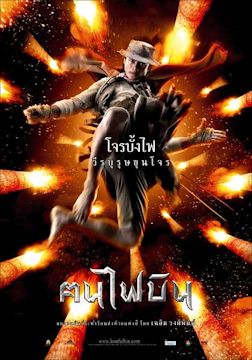
Abb.: Plakat
[Fair use]
|
"Born to Fight – Dynamite Warrior (Thai: คนไฟบิน, Kon fai bin) ist ein thailändischer Martial-Arts-Film mit Elementen des Westerns, des Fantasyfilms und der Komödie aus dem Jahr 2006. Regie führte Chalerm Wongpim (เฉลิม วงค์พิมพ์), der auch am Drehbuch mitarbeitete. HandlungSiam (สยาม) wird im 19. Jahrhundert zunehmend von den europäischen Mächten als Interessengebiet betrachtet, dessen man sich versichern will. 1855 unterzeichnet das südostasiatische Königreich im sogenannten Zeitalter des „wirtschaftlichen Handels“ schließlich den Bowring-Vertrag, ein Wirtschaftsabkommen mit England, um Waren – insbesondere Reis als wichtigstes Exportgut – auszuführen. In den folgenden Jahren wird so die Reisanbaufläche vervielfacht, allerdings stößt die enorm gestiegene Nachfrage gepaart mit der traditionellen Bewirtschaftung der Felder an eine Kapazitätsgrenze, als nicht mehr genügend Wasserbüffel für den Feldeinsatz aufgetrieben werden können. Um den Mangel an Nutztieren vorzubeugen, treiben Viehhändler, Nai Hoi (นายฮ้อย) genannt, die begehrte „Ware“ aus dem Norden in die Khorat-Hochebene (ที่ราบสูงโคราช). Einer von ihnen ist der gutmütige Zauberer Singh (สิงห์). Der lispelne Geschäftsmann Graf Wang (พระยาแหว่ง) importiert kostspielige moderne Traktoren, um sie gewinnbringend an die eher rückständigen Bauern im Isaan (อีสาน) zu verkaufen. Da die verarmte Bevölkerung jedoch die preiswerteren Büffel bevorzugt, Händler ständig neue Büffel anbieten, heuert Wang skrupellose Viehdiebe an, um mordend und raubend den Zustrom von Zug- und Nutztieren zu begrenzen. Der Traktorhändler will so seine Konkurrenz ausschalten, Büffelhändler Singh ist ihm dabei ein Dorn im Auge. Vor diesem Hintergrund sucht der junge Außenseiter Jone Bang Fai (โจรบั้งไฟ), eine Art Robin Hood, nach einem feigen Mörder und Viehdieb mit übermenschlichen Fähigkeiten, der einst seine Eltern tötete und ihn als Knaben schwer verletzt seinem Schicksal überließ. Der Jüngling wuchs zu einem begnadeten Muay-Thai-Kämpfer (มวยไทย) und Raketentechnik-Experten heran, der seitdem seine Fähigkeiten selbstlos für das Gute einsetzt um gewaltsam geraubte Viehherden den ursprünglichen Besitzern, oftmals verarmten Bauern, zurückzugeben. Eines Tages ist Bang Fai davon überzeugt, den Schuldigen in dem mächtigen Singh gefunden zu haben. Sein einziger Indiz ist eine markante Tätowierung auf dem Oberkörper des Verdächtigen, der sich anfänglich mittels seiner magischen Fähigkeiten dem Zugriff des Rächers entziehen kann. Graf Wang und dessen räuberischen Schergen wissen um die Macht von Singh und da sie ihn nicht unschädlich machen können, wendet sich der Adlige an den Schwarzen Dämon Dam (ปอปดำ), der bereitwillig Hilfe anbietet, um Rache an seinem einstigen Freund und Gefährten für einen lang zurückliegenden Fluch zu nehmen. Für einen Zauberspruch benötigt der magische Bösewicht allerdings Menstruationsblut einer Jungfrau – seine angebliche Tochter E-sao (อีสาว) enennt er als mögliche „Spenderin“ – sowie eine mutige Person die Singh möglichst nahe kommt. Mit einer List sichert sich Wang die Dienste des nichtsahnenden Bang Fai, der in Singh irrtümlich den gesuchten Mörder vermutet. Wenig später, zwischenzeitlich ist der Held E-sao nähergekommen, kommt es zu einem ungleichen Zweikampf mit dem überraschten Singh, den Bang Fai für sich gewinnen kann. Spätestens jetzt erkennt der begnadete Kämpfer, das er einem Komplott zum Opfer gefallen ist, Singh in Wirklichkeit ein rechtschaffender Händler ist. Seine Feinde sind Graf Wang und der düstere Dämon Dam, der sich als Mörder seiner Eltern offenbart. Am Ende des Films versucht Bang Fai seine Schuld zu sühnen und den verfluchten Singh zu helfen. Dabei behauptet er sich erfolgreich gegen seine zwei verbliebenen Widersacher, die sich in einem sonderbaren Ritual zu einem Körper vereinen, sowie gegen einen kannibalistischen Banditen (โจรกล่องข้าวน้อย). Inmitten dieser undurchsichtigen Kampfhandlungen stirbt der schwer verletzte Singh. In der letzten Szene des Films reitet der Held des Films, Bang Fai, mit seiner Angebeteten E-sao auf dem Rücken eines Büffels. Besetzung
„Zwischen all dem billigen CGI und einigen Raketenritts von Chupong finden sich noch einige sehr gut gemachte Stunts und Prügeleien, die zeigen, wie gut Martial-Arts aus Thailand sein kann. Die meiste Zeit schafft es der thailändische Actioner aber vorzüglich zu langweilen.“ – Björn Becher: Filmkritik auf filmstarts.de [1] [Quelle: http://de.wikipedia.org/wiki/Born_to_Fight_%E2%80%93_Dynamite_Warrior. -- Zugriff am 2013-03-23] |
2006-12-28
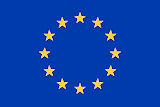
Nach Angaben der Europäischen Zentralbank sind weltweit Euro-Scheine im Wert von 614 Mrd. € im Umlauf. Damit hat der Euro den Dollar als Bargeldwährung überrundet: weltweit sind Dollar-Scheine im Wert von umgerechnet 588 Mrd. € im Umlauf.
ausführlich: http://www.payer.de/thailandchronik/ressourcen.htm
Zu Chronik 2007 / B. E. 2550. -- 1. undatiert